Hitman 3 has received ray tracing and DLSS via an update. ComputerBase looks at this in detail and comes to the conclusion that the implementation is not convincing at all. Because ray tracing simply costs far too much power, so the rays should actually remain switched off with every graphics card.
Table of contents
- 1 More ray tracing would be nice, but not like this
- Hitman 3 and ray tracing are not a good combination
- Ray tracing as well as AMD FSR and Nvidia DLSS in detail
- The image quality of ray tracing
- The image quality of AMD FSR 1.0 and Nvidia DLSS 2.3.2.0
- 2 Performance of ray tracing, DLSS and FSR and conclusion
- The test system
- The performance of ray tracing
- The performance of AMD FSR and Nvidia DLSS
- Conclusion
Ray tracing has made great strides in the past twelve months. The still quite new technology is increasingly used in games. So the visual benefit is getting bigger. In addition, developers are increasingly learning to what extent different RT detail levels make sense for different GPUs. For example, Guardians of the Galaxy (review) is one of the best implementations. If you do without ray tracing, you will miss a lot. Even low RT levels bring a lot and cost an acceptable level of FPS. Occasionally, the conversions in some games are still a little snagged, but compared to the early days things are looking much better for raytracing these days.
Hitman 3 and ray tracing are not a good combination
And then came Hitman 3. More specifically, the ray tracing patch for Hitman 3, which makes you wonder how the hell a developer could release such an update. If the fastest graphics card with clearly the best ray tracing performance even in Full HD only achieves a miserable 40 FPS on average and sometimes just crawls around with just 30 FPS, you have to realize that it's not playable like this. Yes, only one chapter goes that badly. But if there are only six chapters, you're on the road for a correspondingly long time in one. However, the performance is also critical in the other chapters and the loss of performance is almost huge. On top of that, it's not very helpful if in the worst-case scenario even DLSS can't squeeze out a single FPS, because apparently it's not the GPU but something else that limits it. In addition, the raytracing shadows sometimes disappear completely thanks to a graphic error. In short: Currently you should avoid ray tracing in Hitman 3.
But what does Hitman 3 offer in terms of ray tracing? The game uses rays for the sun shadow that can be switched on and off separately, which are almost never seen, which is perhaps a good thing due to the graphic errors that sometimes occur. Meanwhile, the RT-based reflections are by far the highlight of the implementation. They undoubtedly look better than the quite chic rasterizer reflections, which in the end only a few gamers will get anything from due to the underground speed. If it takes a GeForce RTX 3090 Ti to get 60 FPS in Ultra HD with DLSS on “Performance” – and then only partially – you can imagine how it looks with other graphics cards.
If the conclusion is right at the front
It is more than unusual that an article on ComputerBase begins with the conclusion as an introduction. But the ray tracing implementation of Hitman 3 is so shocking that in this case you have to fall straight into the house. Ray tracing simply shouldn't be used in Hitman 3 regardless of graphics card. It would be best if the developers pulled the update back altogether, because that would only damage the game itself, the reputation of the makers and ultimately the ray tracing technology. The optical update is currently a cheek.
Raytracing as well as AMD FSR and Nvidia DLSS in detail
Hitman 3 offers ray tracing for the sun and moon shadows and the reflections after the update. Both options can be switched on and off separately from each other. In addition, AMD's FSR version 1.0 and DLSS version 2.3.2.0 have been added. There is no sharpness filter in either case.
The image quality of raytracing
“As you can see, you see nothing” is the motto of the raytracing shadows, because they are never really noticeable. Due to their nature, they cannot exist indoors without direct sunlight, but although the sun and moon have an influence, the picture quality either does not change at all or only minimally. On top of that, it's difficult to describe exactly which shadows are now calculated with ray tracing. The sun shadows are almost always still a rasterizer variant.
If you do see them, it's not as if objects suddenly cast a shadow with ray tracing that didn't cast a shadow before, or as if broken rasterizer shadows were suddenly displayed correctly. Instead, exactly the same shadows are displayed with ray tracing, but they apply a shadow of different thicknesses depending on the distance to the shadow-casting object. This is optically correct, but is almost never noticed in Hitman 3. Most of the time, the effect can only be seen when there are trees in play, whose shadows are then usually calculated with ray tracing.
-
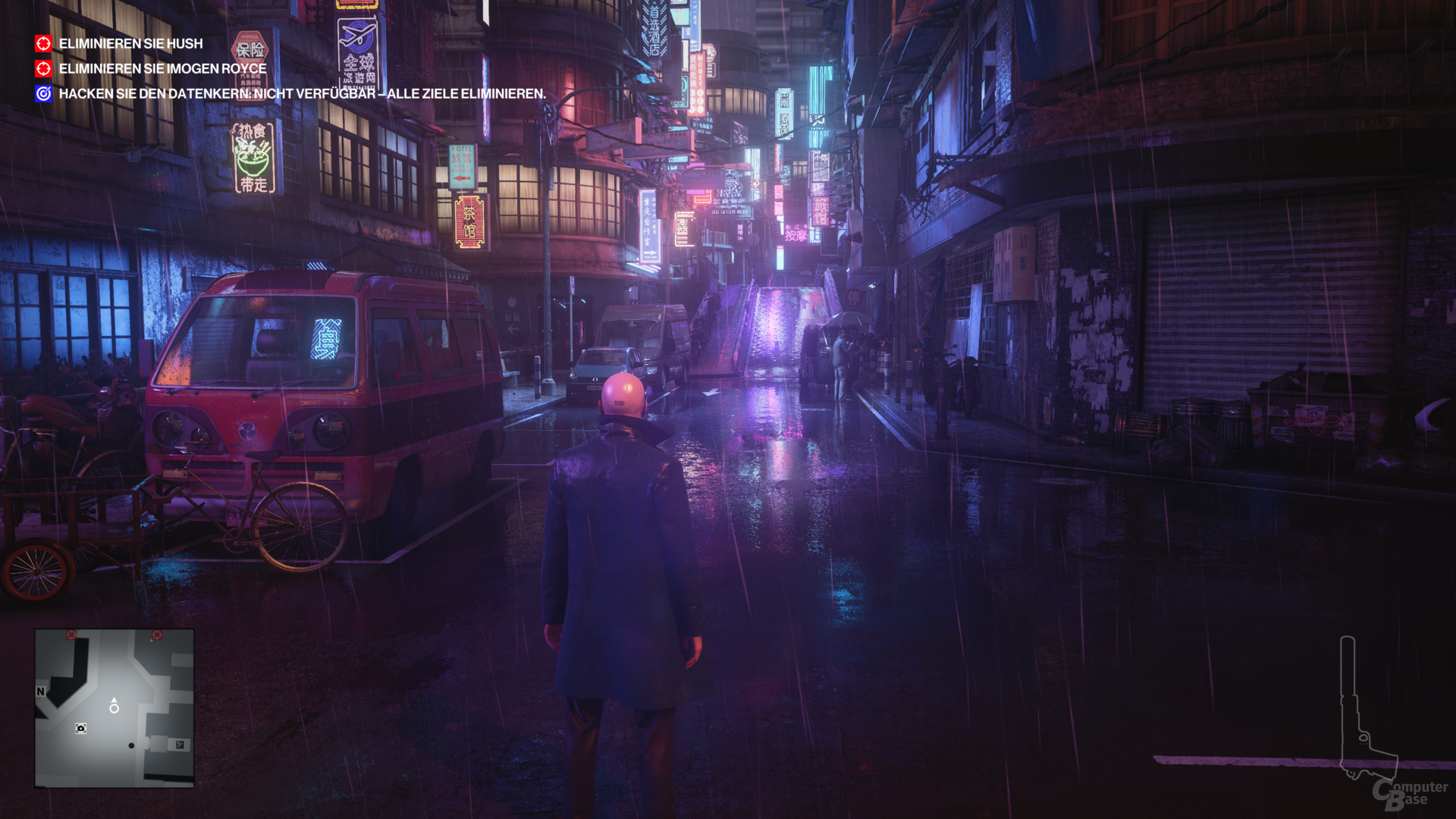 Ray tracing off Download
Ray tracing off Download
Image 1 of 24
 Ray Tracing Off
Ray Tracing Off 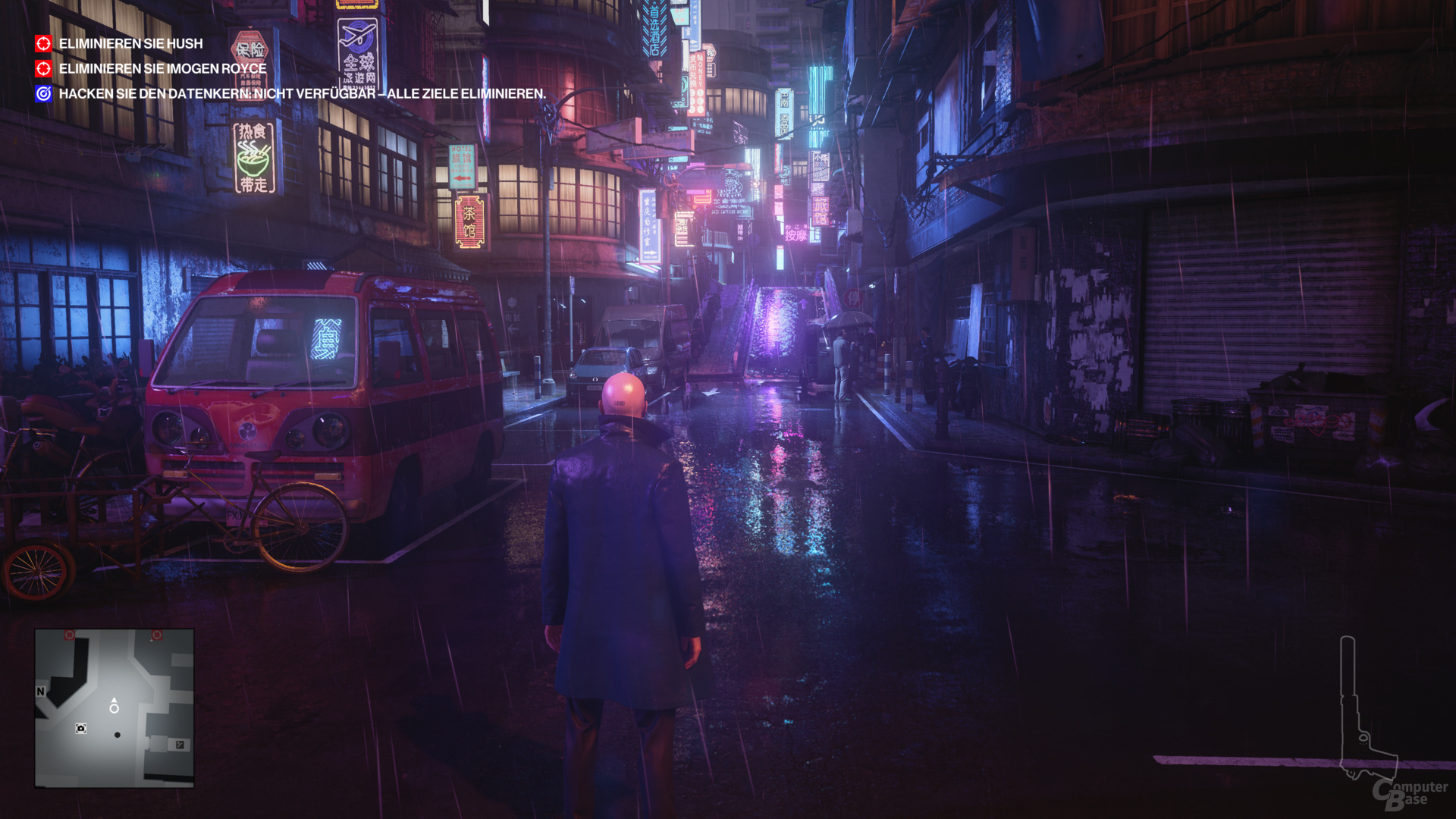 Raytraced reflections
Raytraced reflections 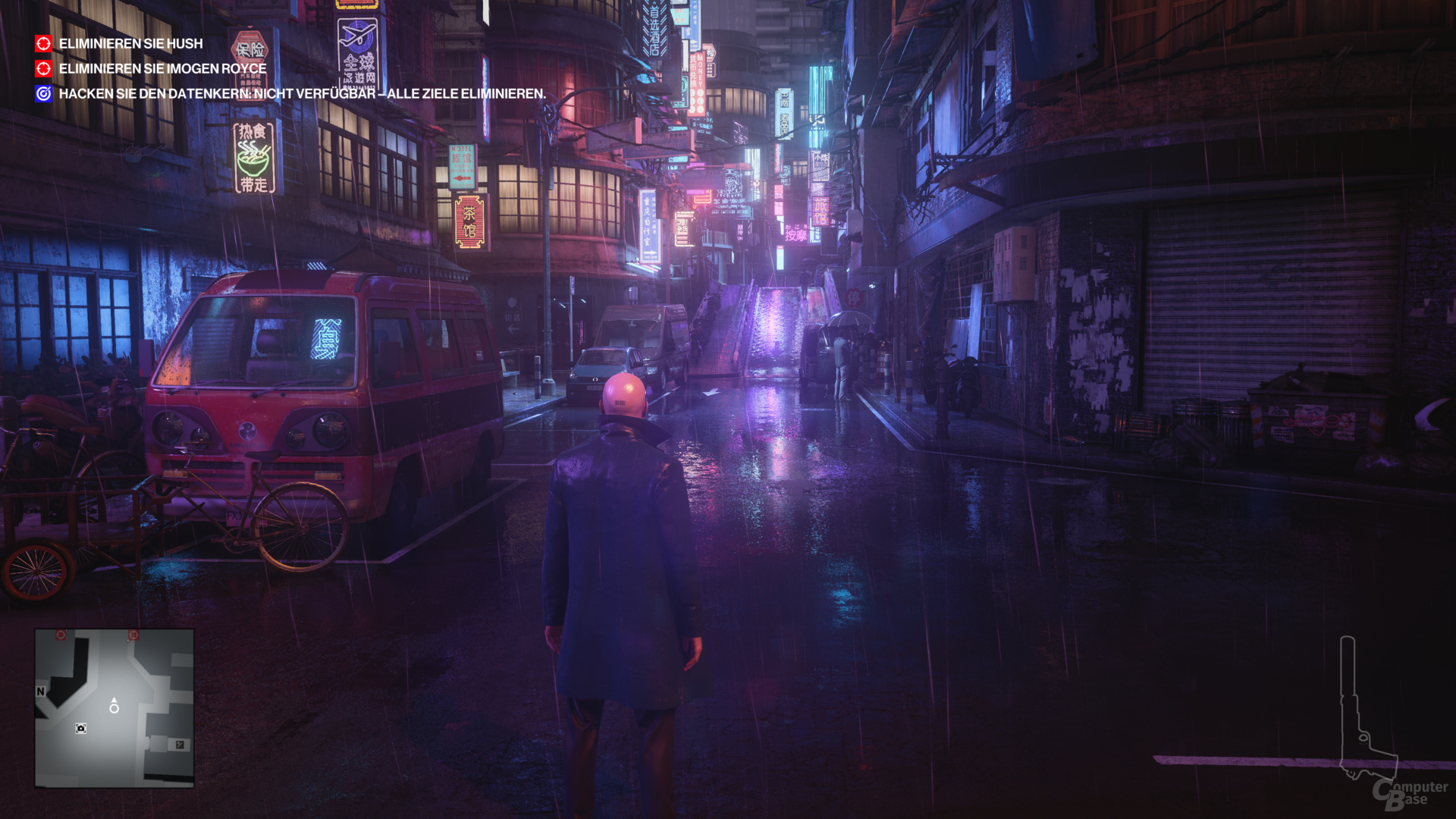 Raytraced shadows
Raytraced shadows 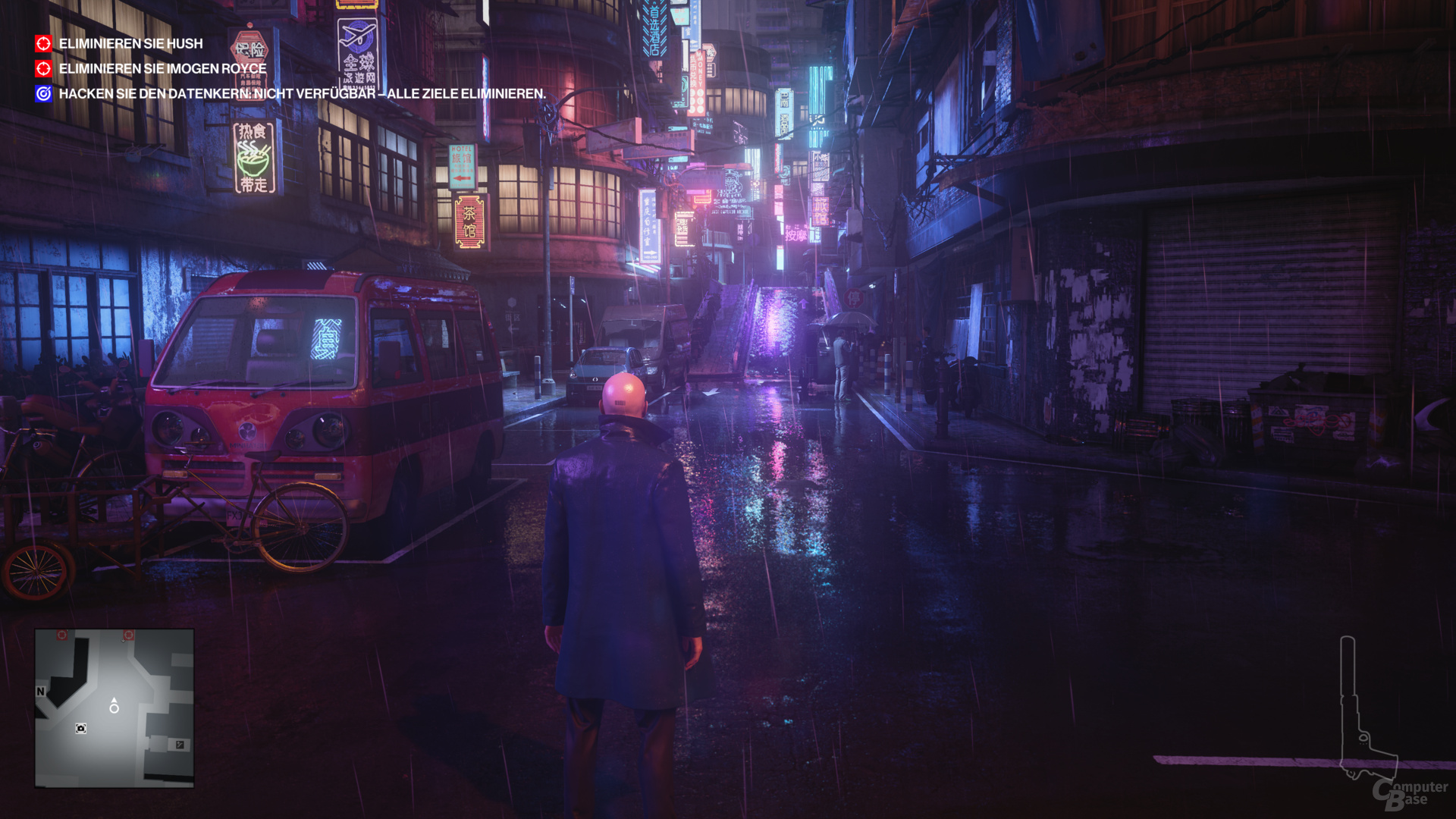 Raytracing reflections + shadows
Raytracing reflections + shadows 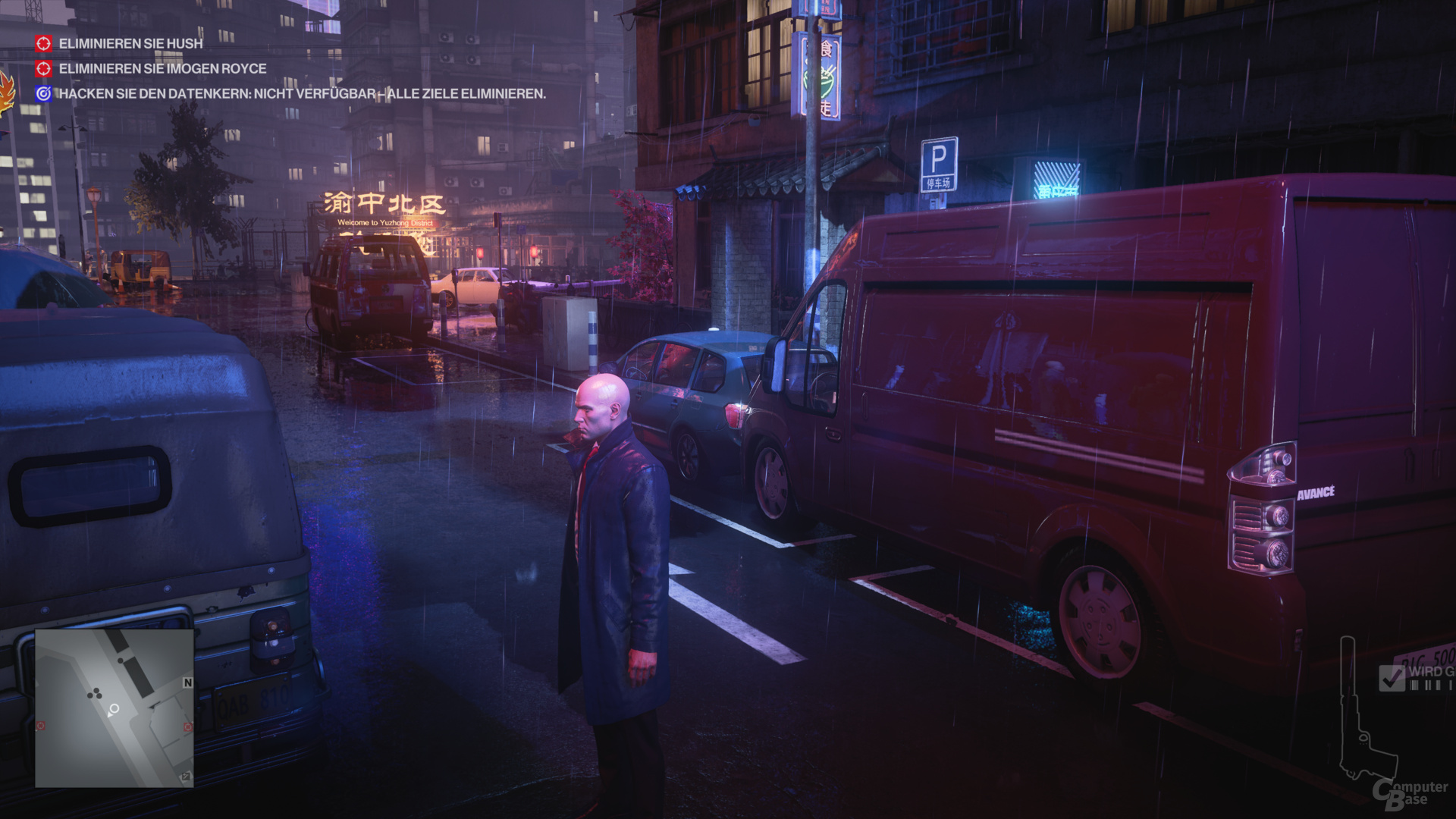 Raytracing Reflections
Raytracing Reflections  Raytracing Shadows
Raytracing Shadows  Raytracing reflections + shadows
Raytracing reflections + shadows 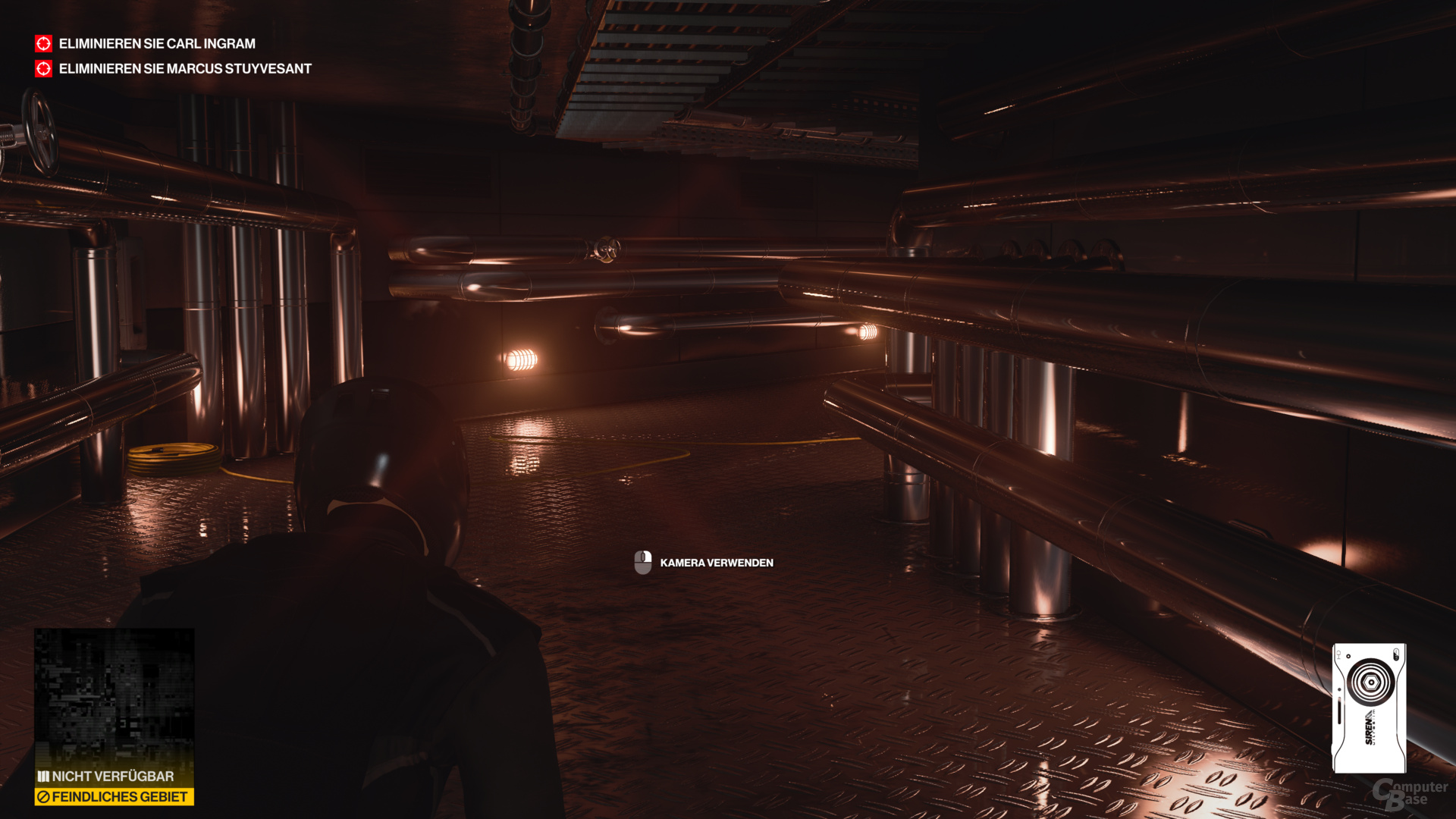 Ray tracing off
Ray tracing off 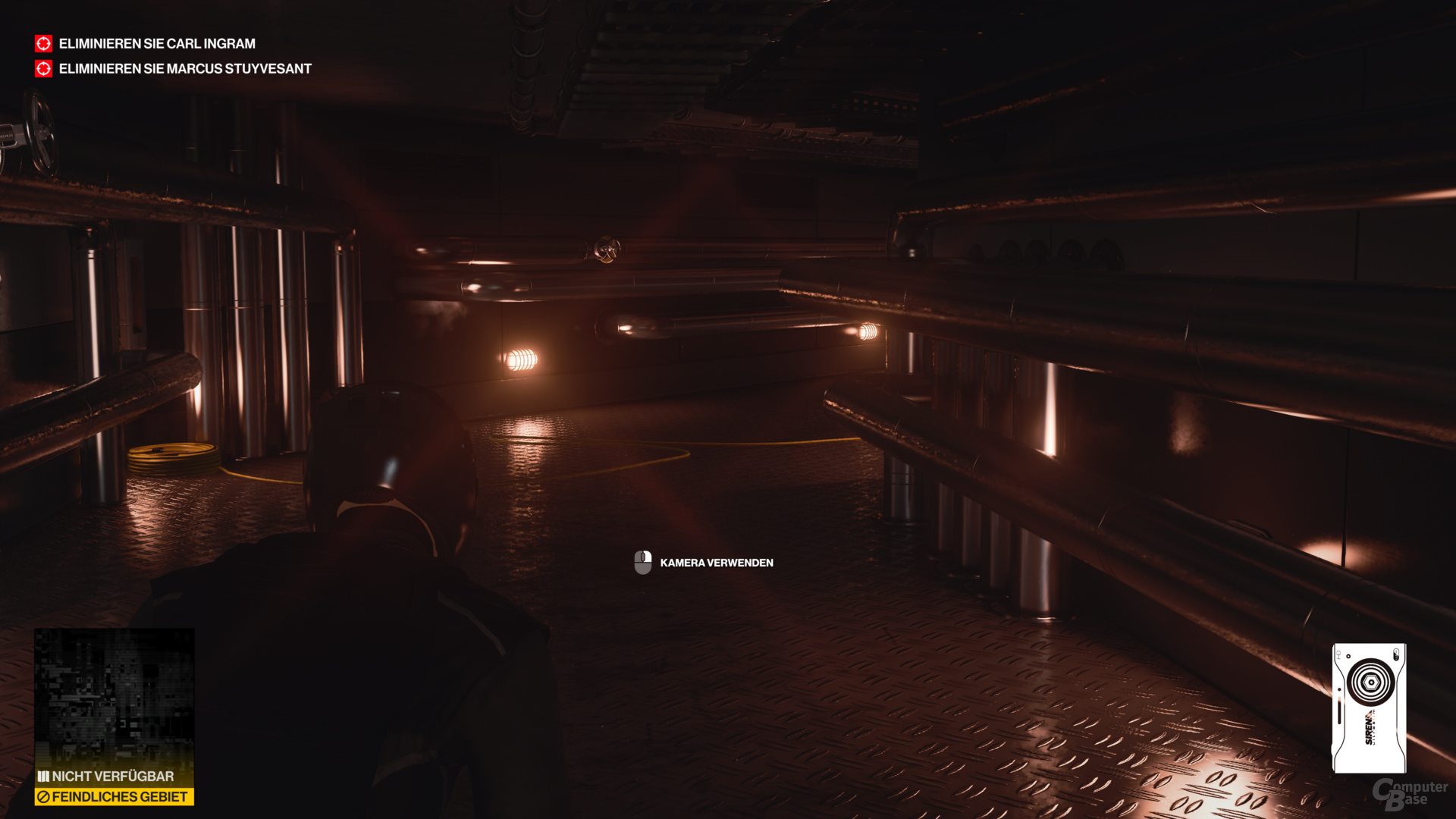 Raytraced reflections
Raytraced reflections 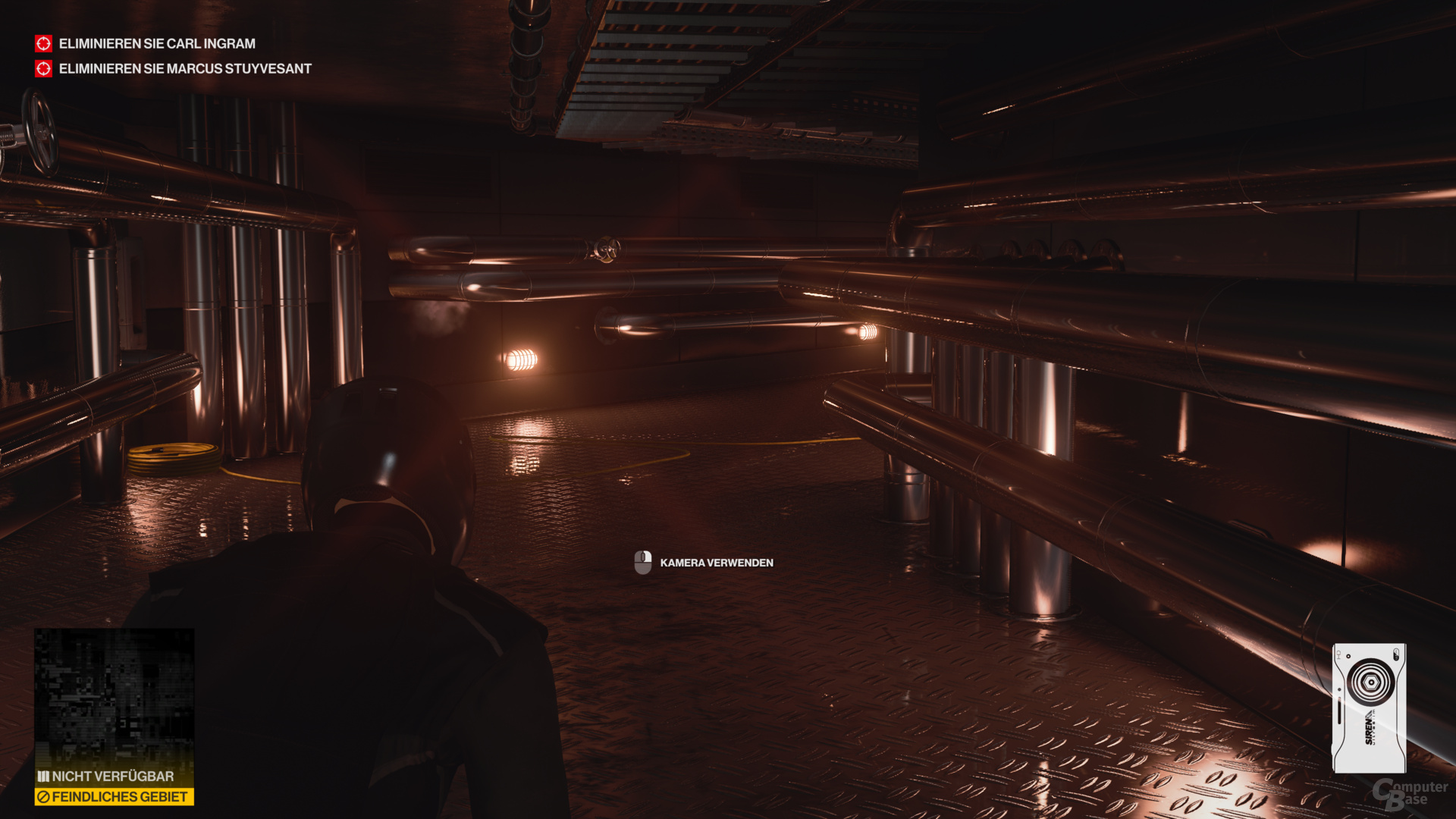 Raytraced shadows
Raytraced shadows  Raytracing Off
Raytracing Off  Raytracing Reflections
Raytracing Reflections 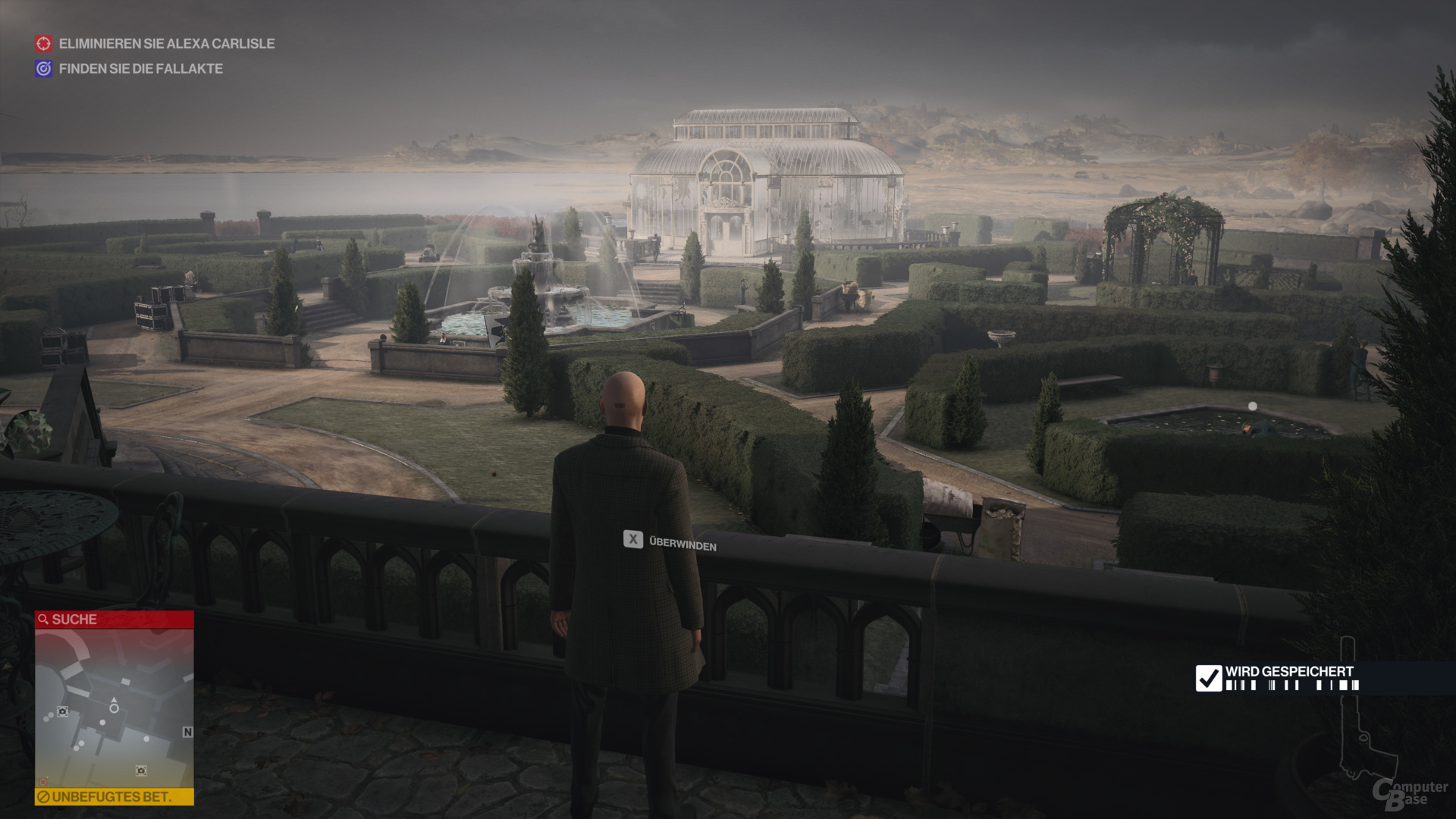 Raytracing shadows
Raytracing shadows 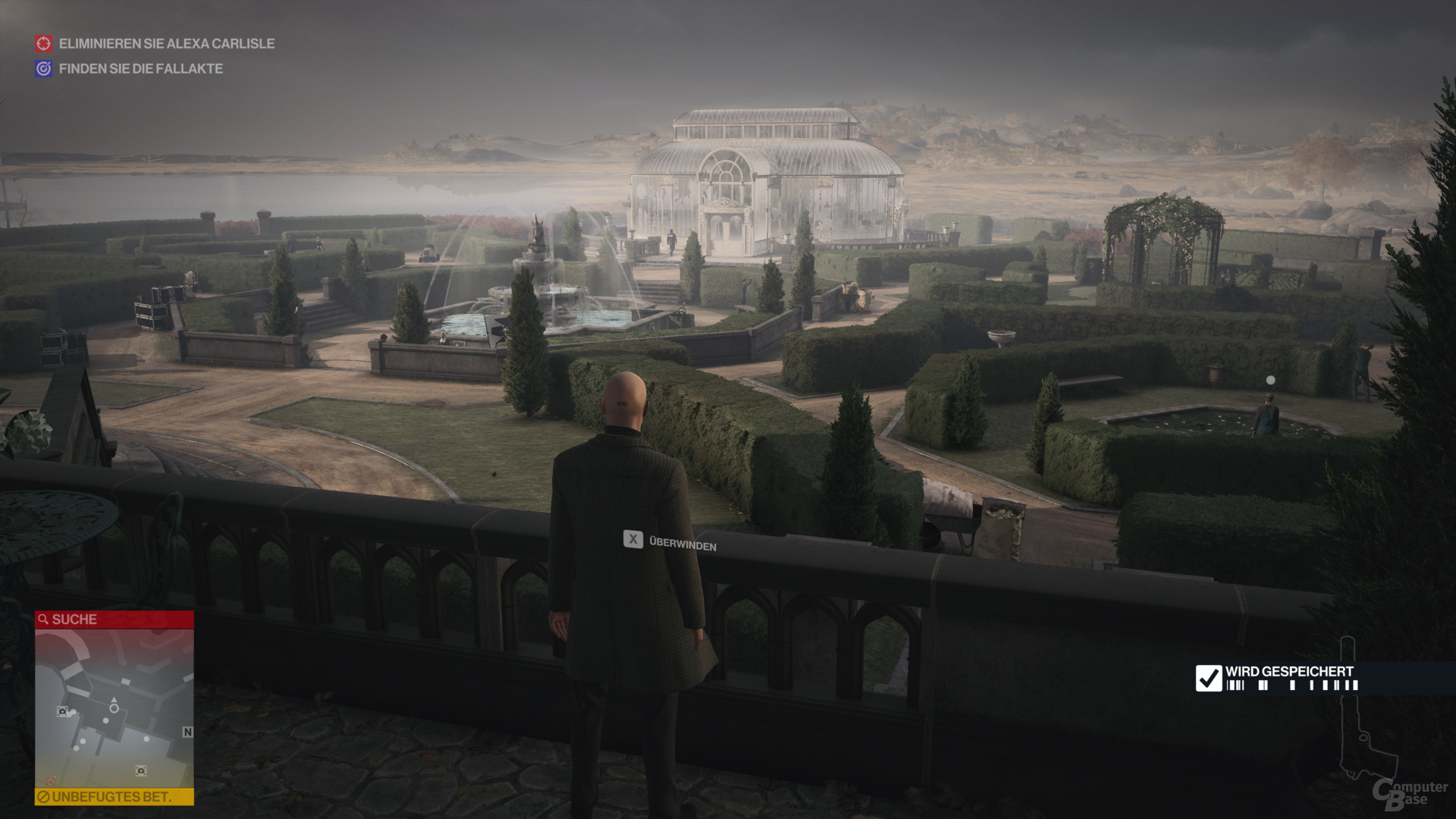 Raytracing reflections + shadows < /figure>
Raytracing reflections + shadows < /figure>
 Raytracing Off
Raytracing Off  Raytraced reflections
Raytraced reflections 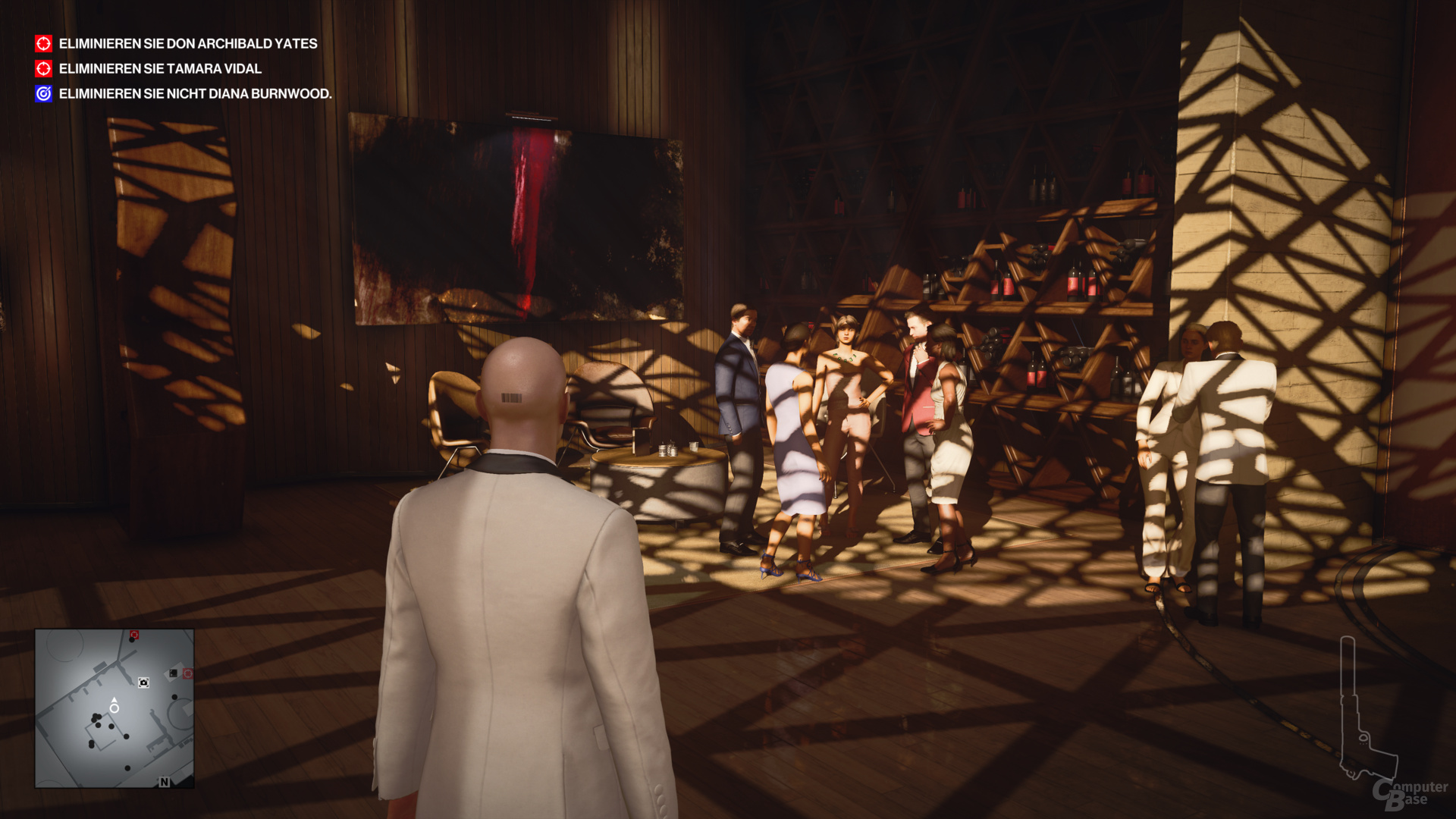 Raytracing shadows
Raytracing shadows 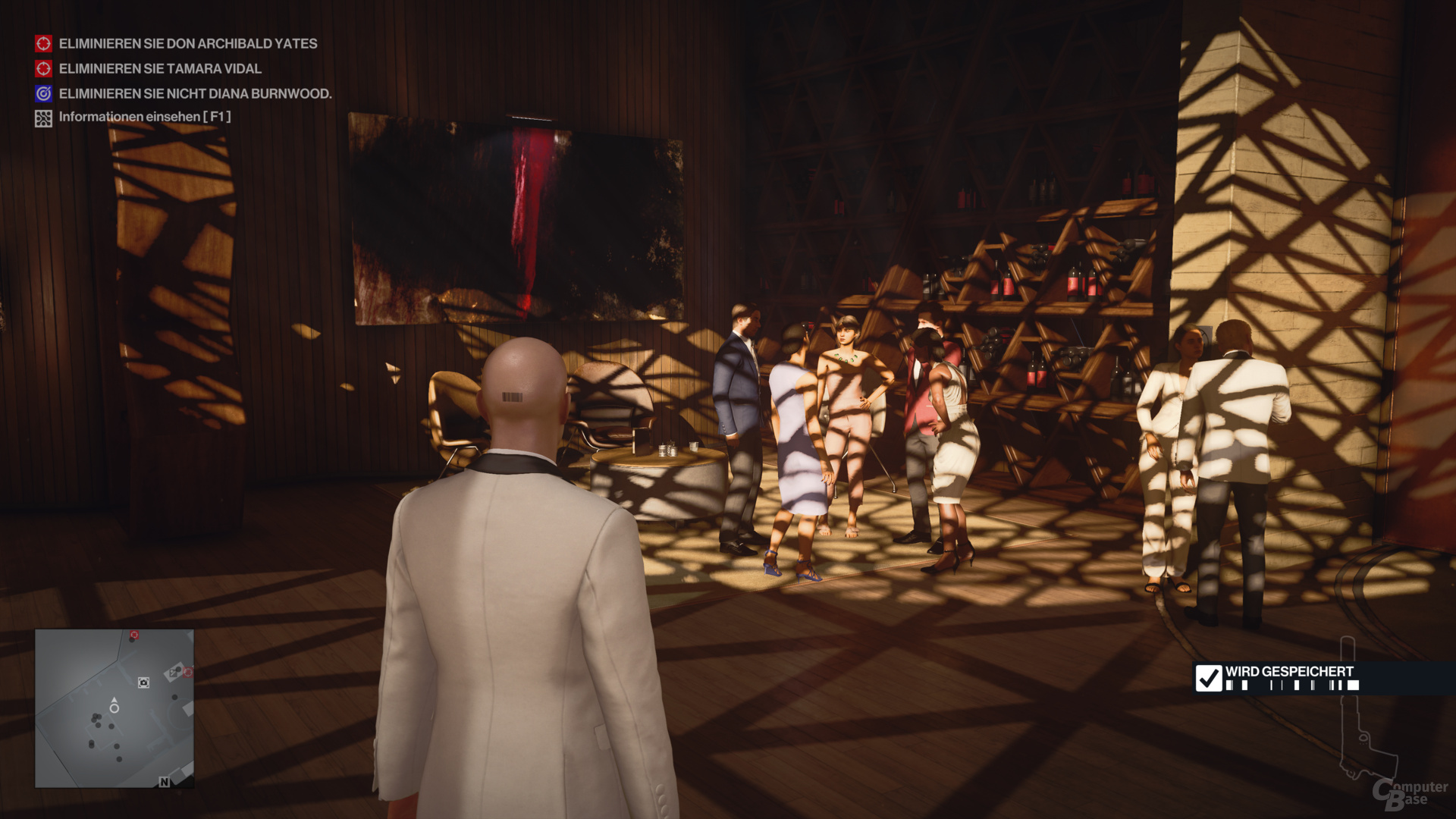 Raytracing reflections + shadows
Raytracing reflections + shadows 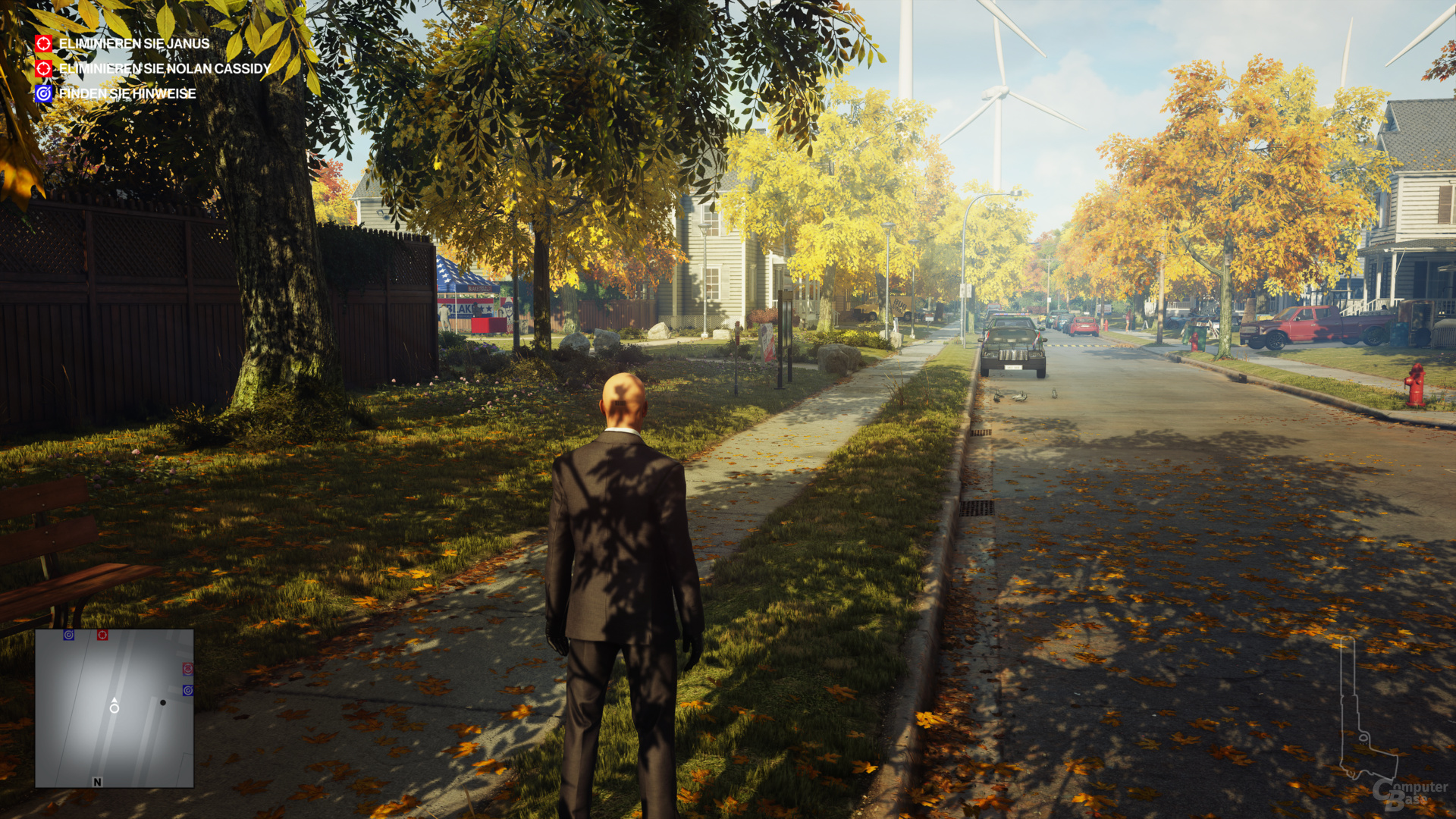 Raytracing Off
Raytracing Off 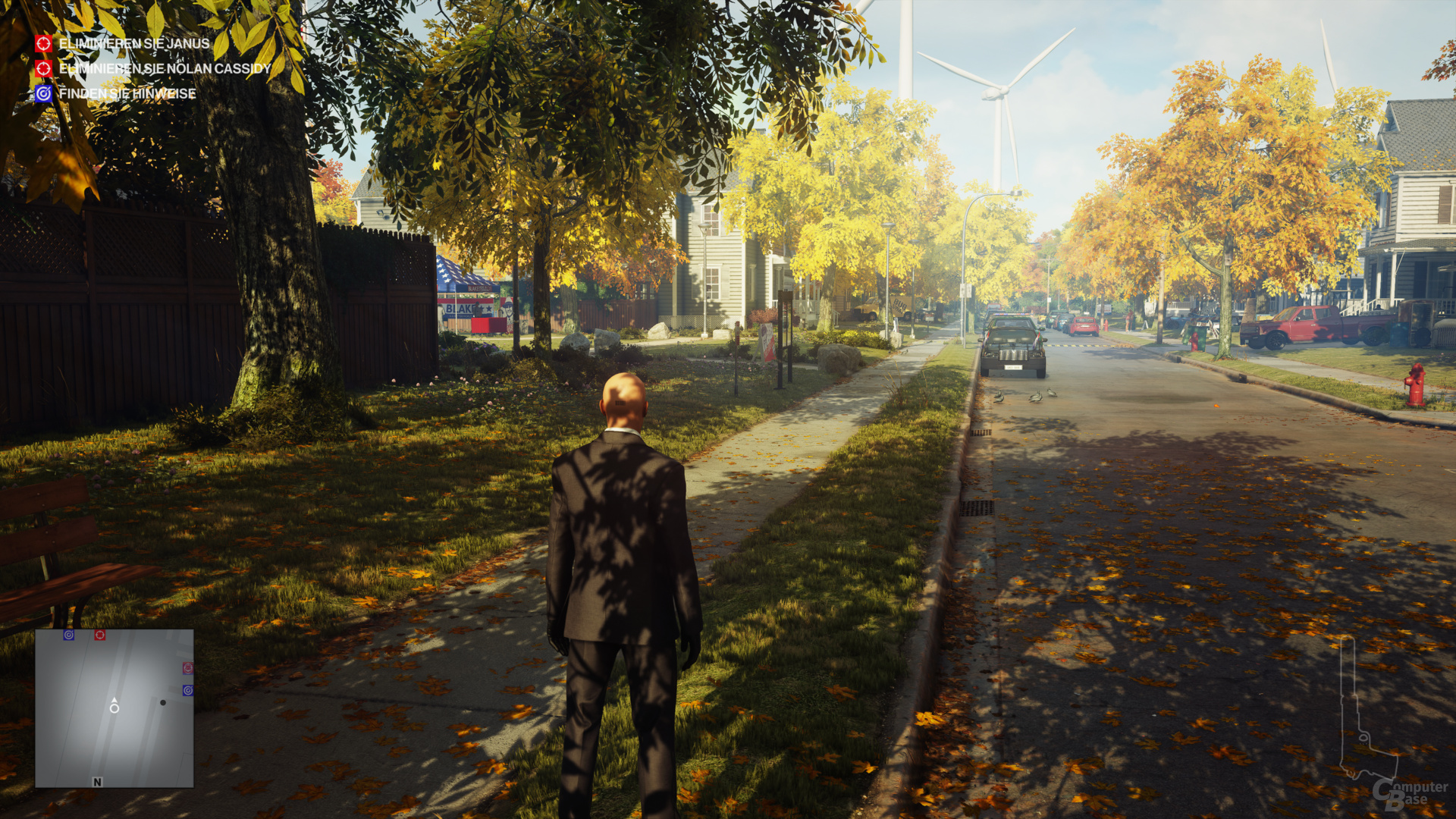 Raytracing Reflections
Raytracing Reflections  Raytraced shadows
Raytraced shadows 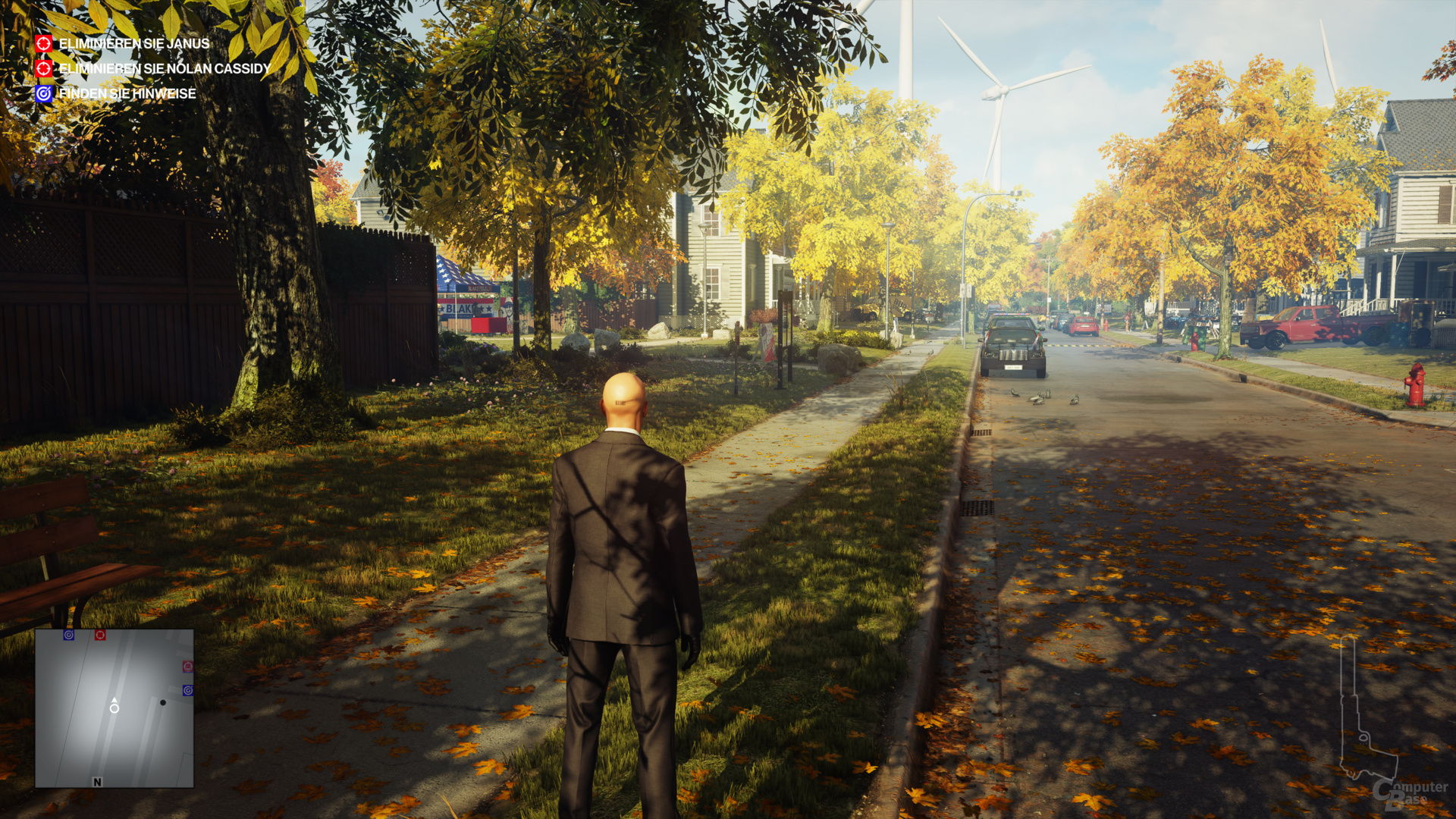 Raytracing reflections + shadows
Raytracing reflections + shadows The reflections are significantly better than the shadows
So while the RT shadows in Hitman 3 bring virtually no visual gain, the reflections look different, because there is a lot to see in Hitman 3. Even in the rasterizer version, the game is designed for the environment to reflect a lot – and that worked very well before the update. For example, the classic screenspace problems with disappearing reflections depending on the viewing direction do not exist. Hitman 3 is probably the game with the most beautiful rasterizer reflections ever. But with ray tracing it works a little better.
This has different effects depending on the level. While you might think that the Chongqing nighttime level, with its rain and lots of neon signs, might be a showcase section for ray tracing, the classic reflections in that section already do such a good job that ray tracing doesn't look much better there . Yes, the reflections on the wet floor are more realistic, but this is only noticeable in a direct comparison. Instead, the cars will all come fresh from the car wash and have obviously been given a piano finish there.
And then there are also scenarios where the raytraced reflections can improve the atmosphere quite a bit. The Dubai level looks really chic with ray tracing. The windows there also reflect more than they should (this is a general problem of the game with ray tracing), but apart from that ray tracing makes a lot. So it expands on those good rasterizer reflections that are happily ending at some point, and RT just picks up from there. In addition, the feature changes the surface properties in places so that they are no longer just reflective, but can suddenly also display shadows instead. That changes the image impression quite a bit – for the better.
-
 Raytracing From Download
Raytracing From Download
Image 1 of 24
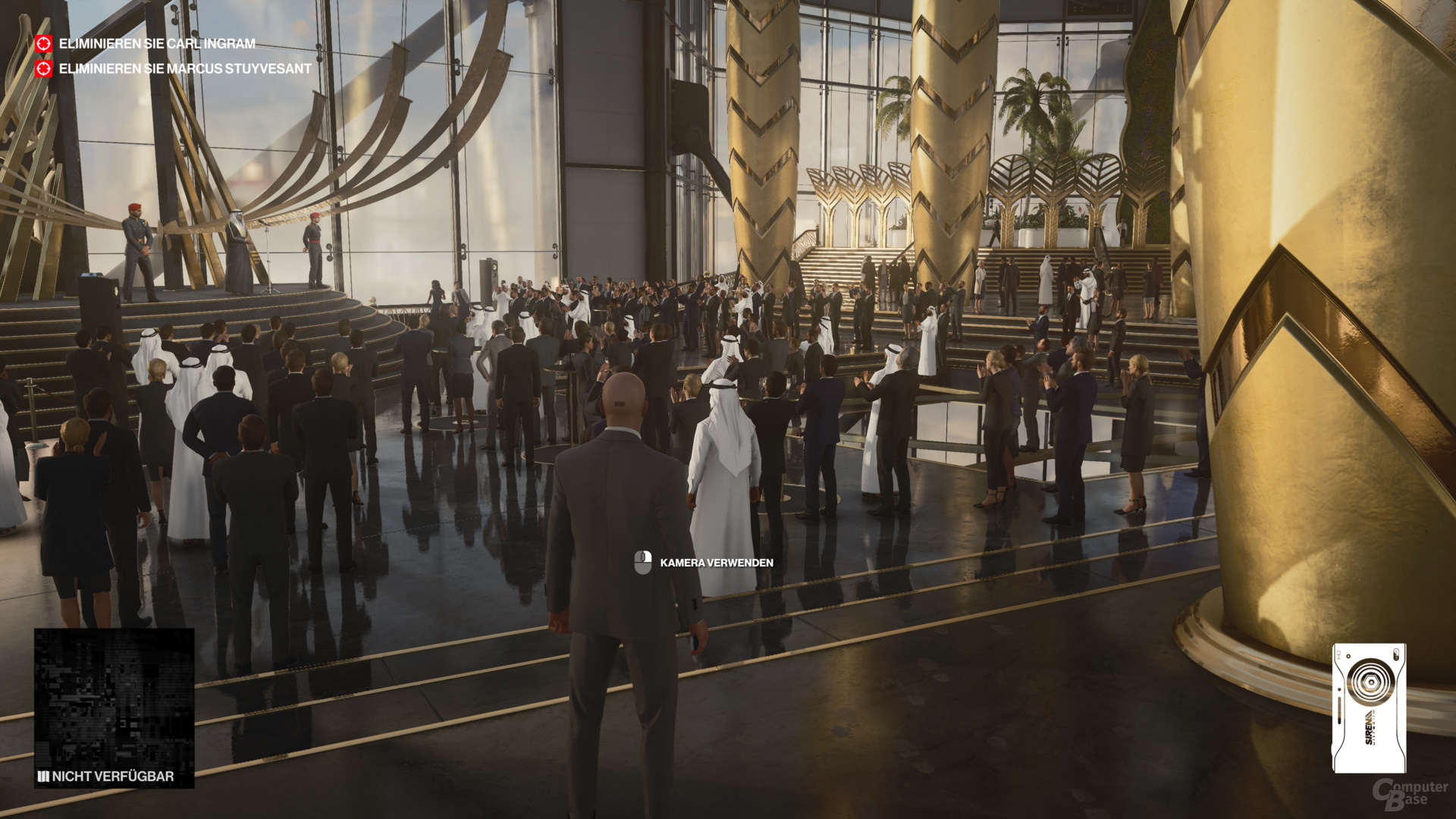 Raytracing Off
Raytracing Off 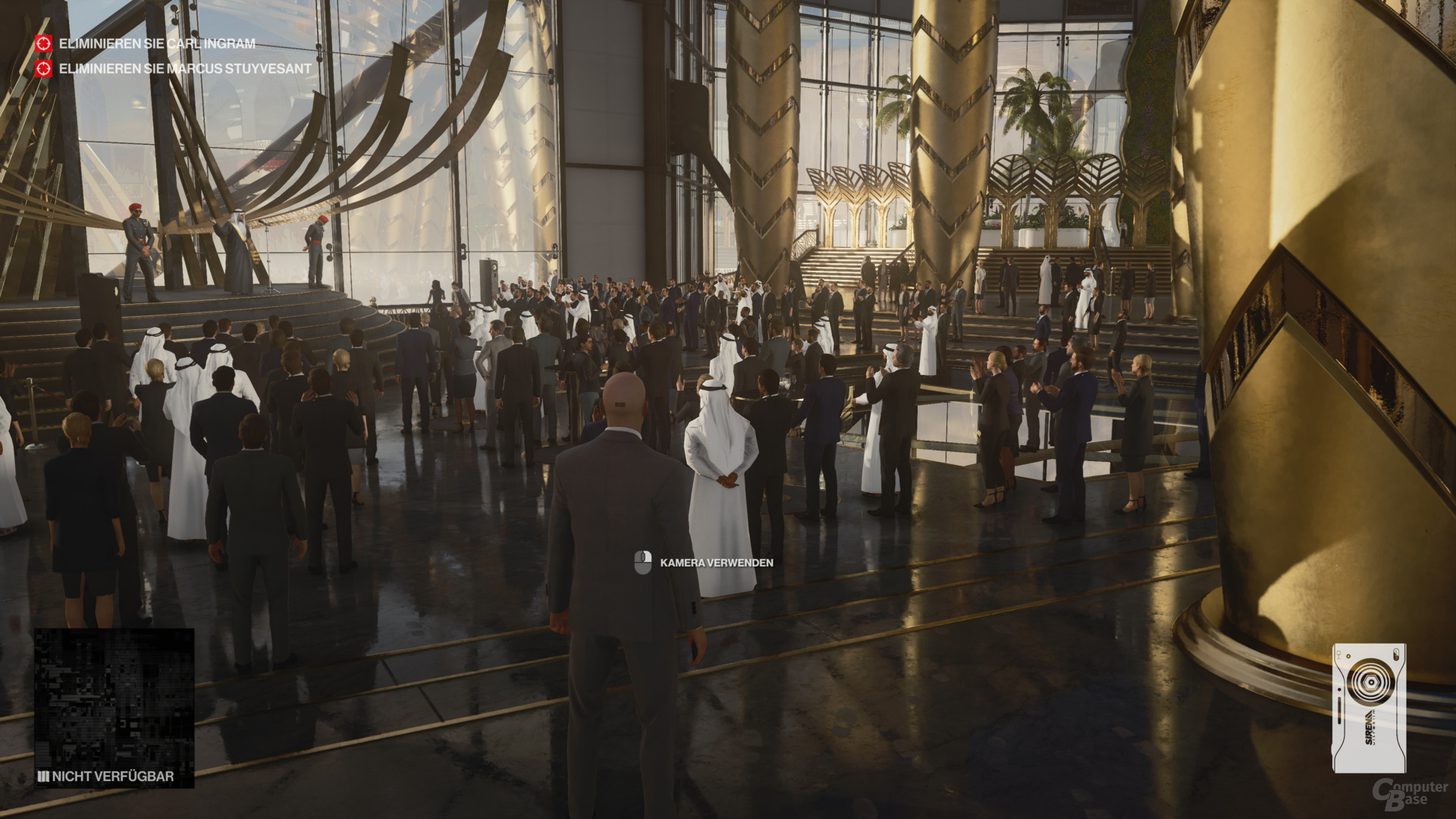 Raytraced reflections
Raytraced reflections 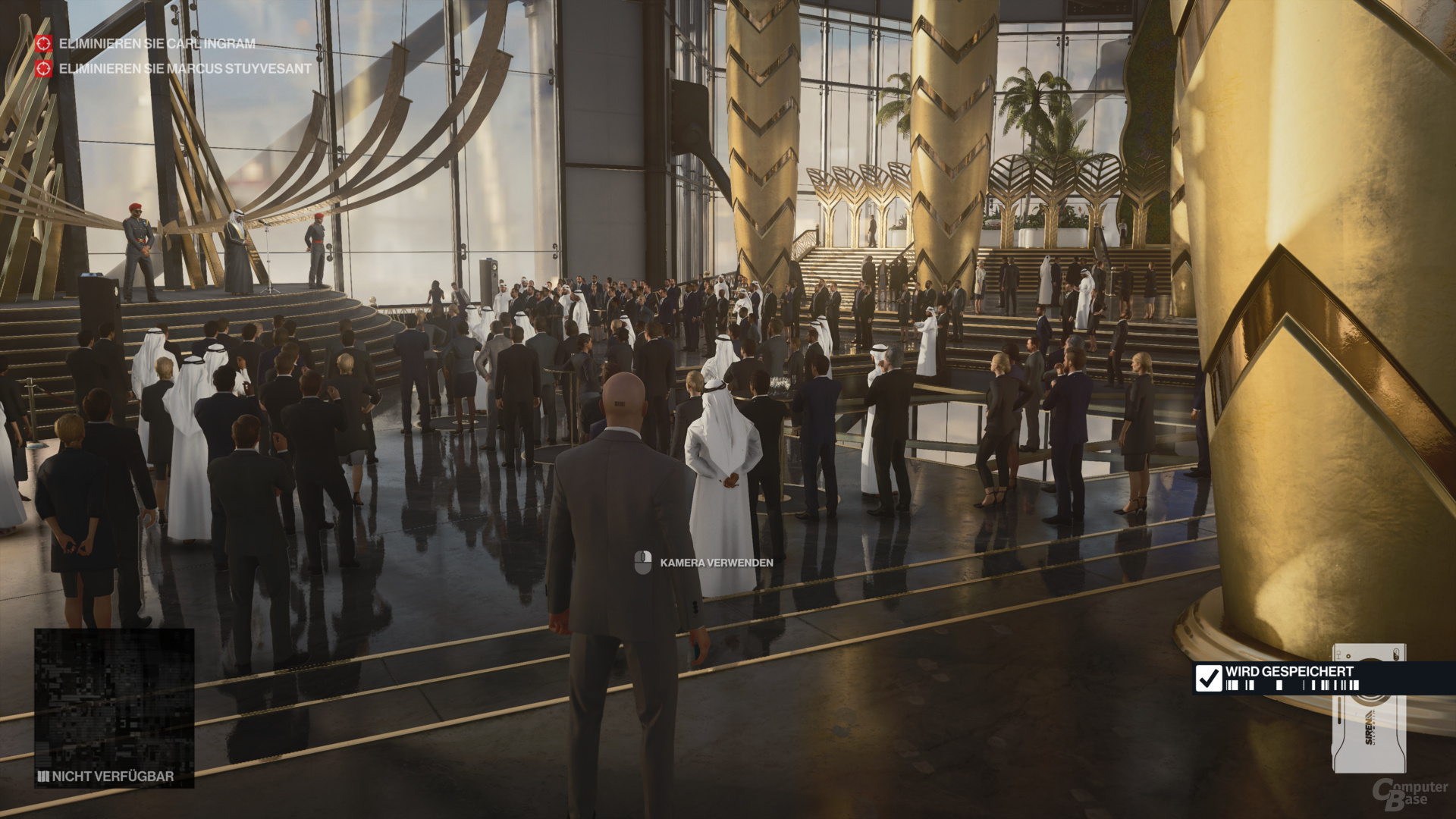 Raytraced shadows
Raytraced shadows  Raytracing Reflections + Shadows
Raytracing Reflections + Shadows 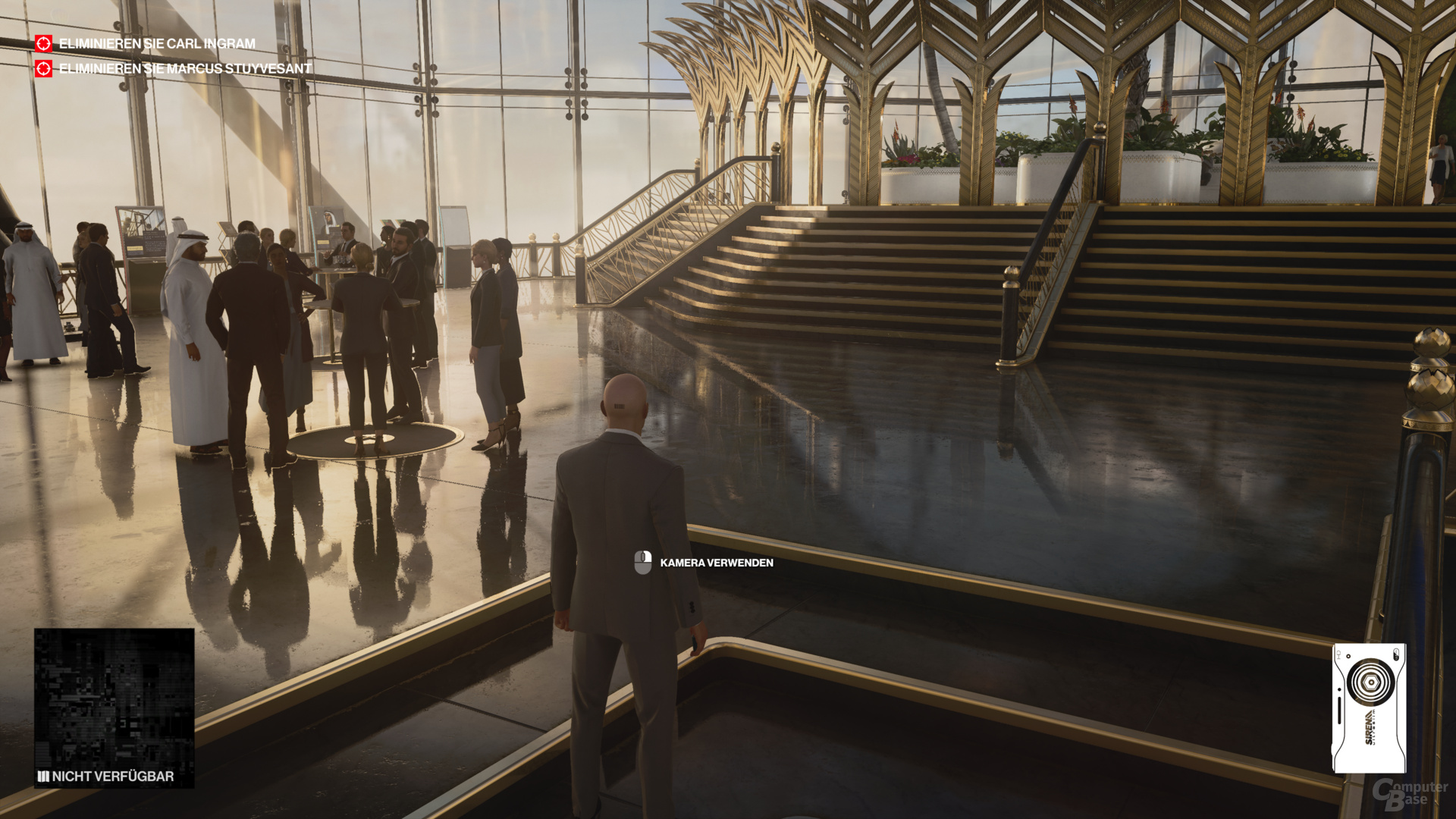 Raytracing Off < /figure>
Raytracing Off < /figure>
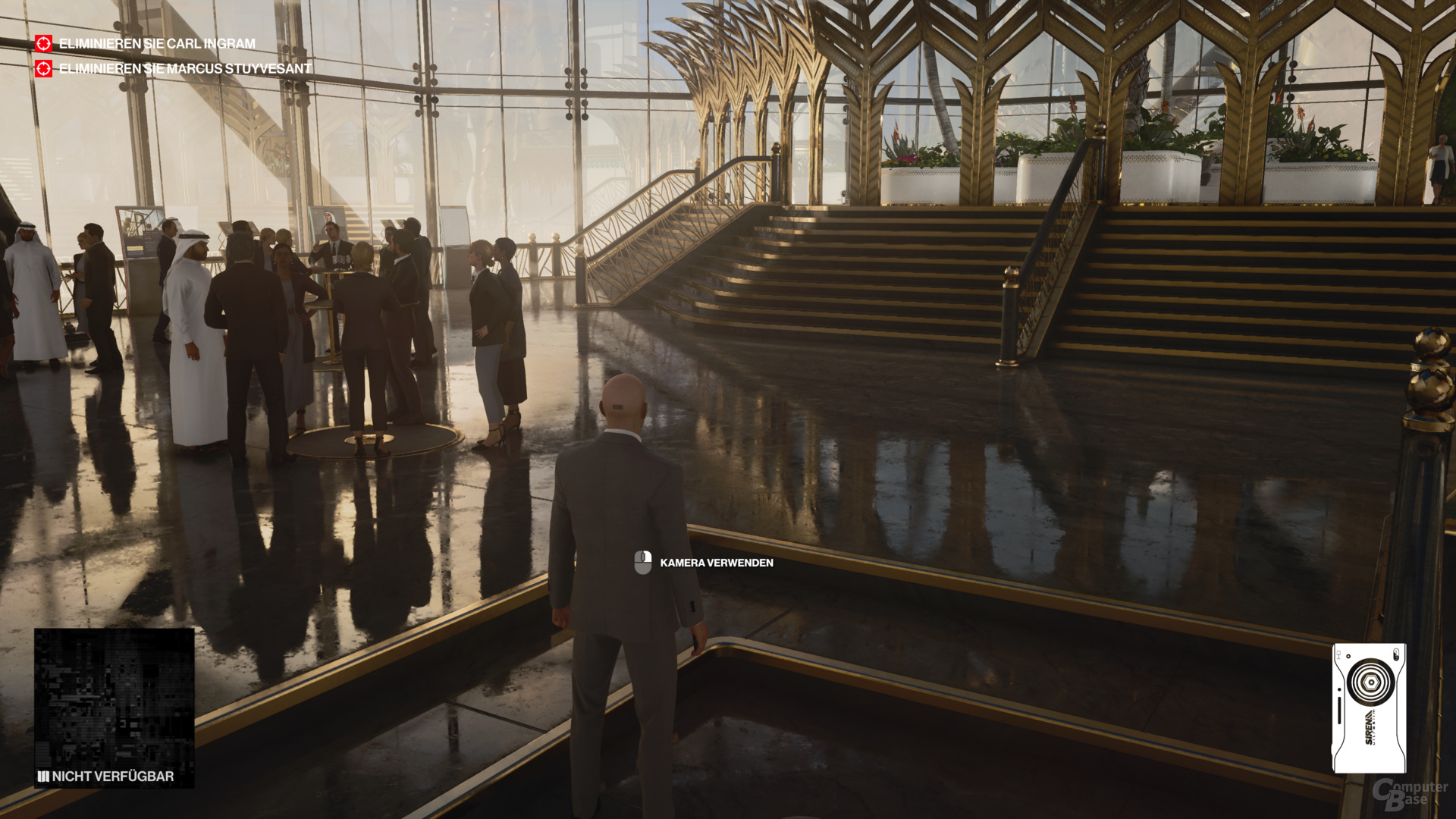 Raytracing reflections
Raytracing reflections  Ray traced shadows
Ray traced shadows 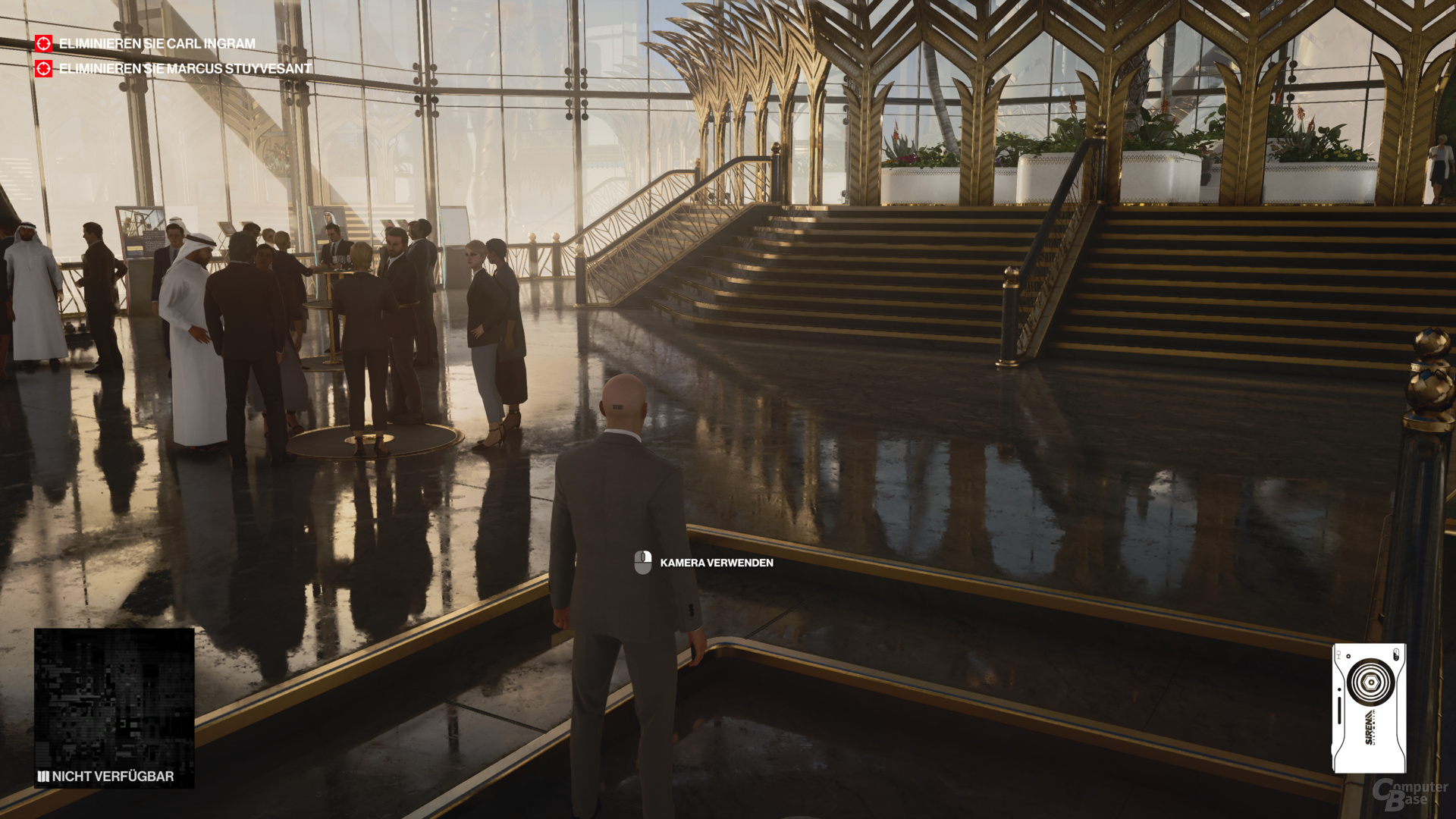 Raytracing Reflections + Shadows
Raytracing Reflections + Shadows 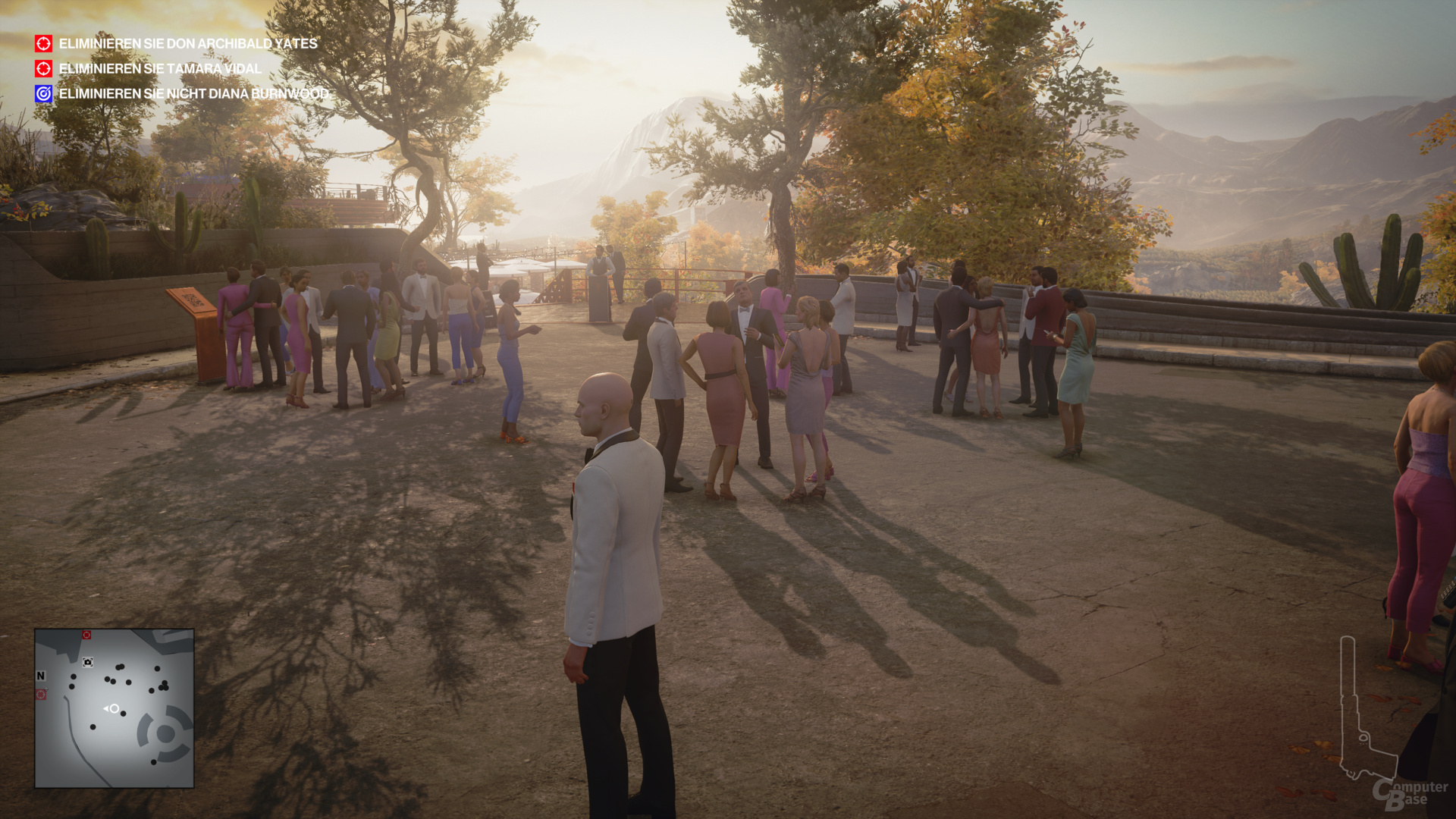 Raytracing Off < /figure>
Raytracing Off < /figure>
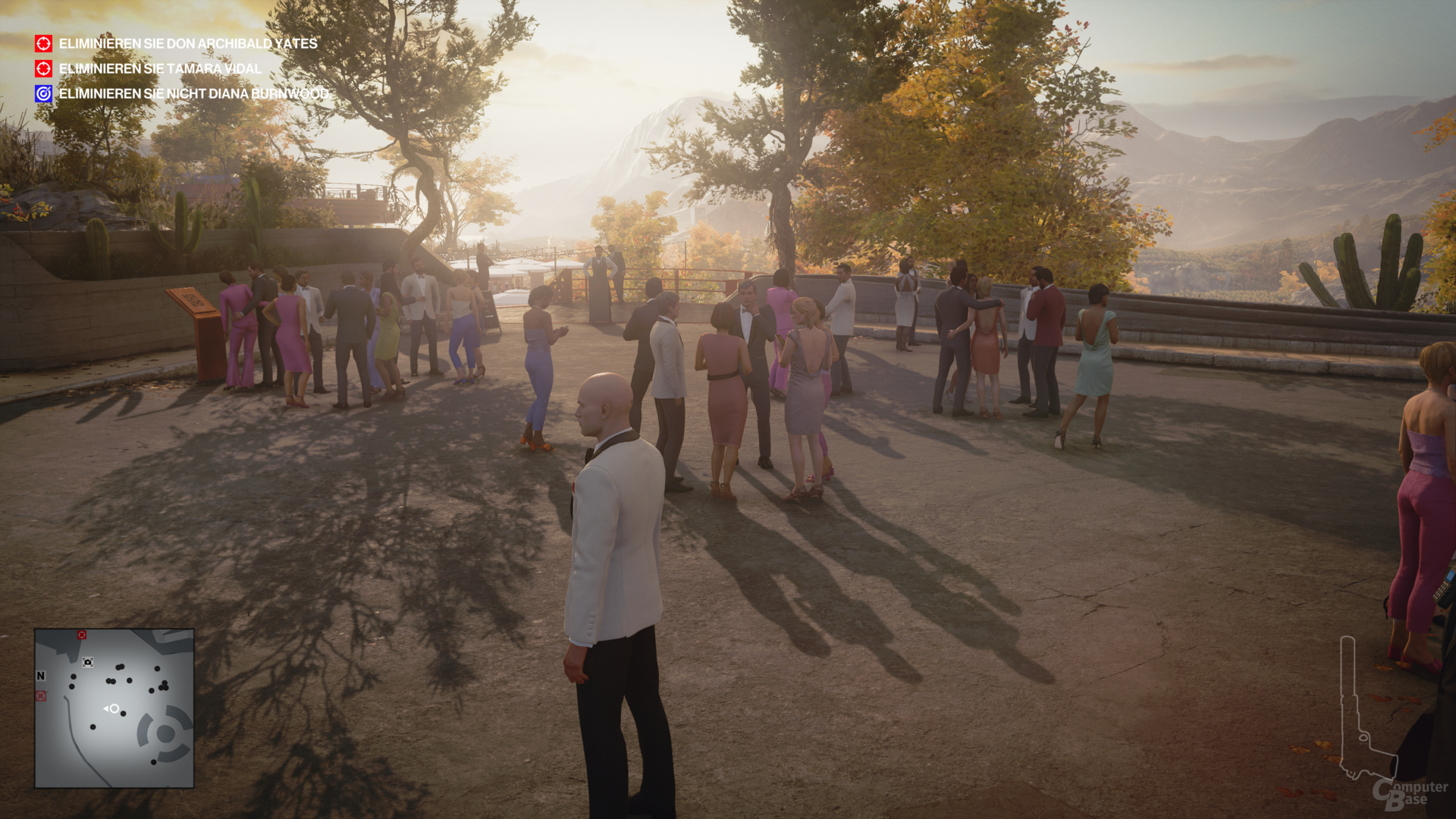 Raytracing reflections
Raytracing reflections 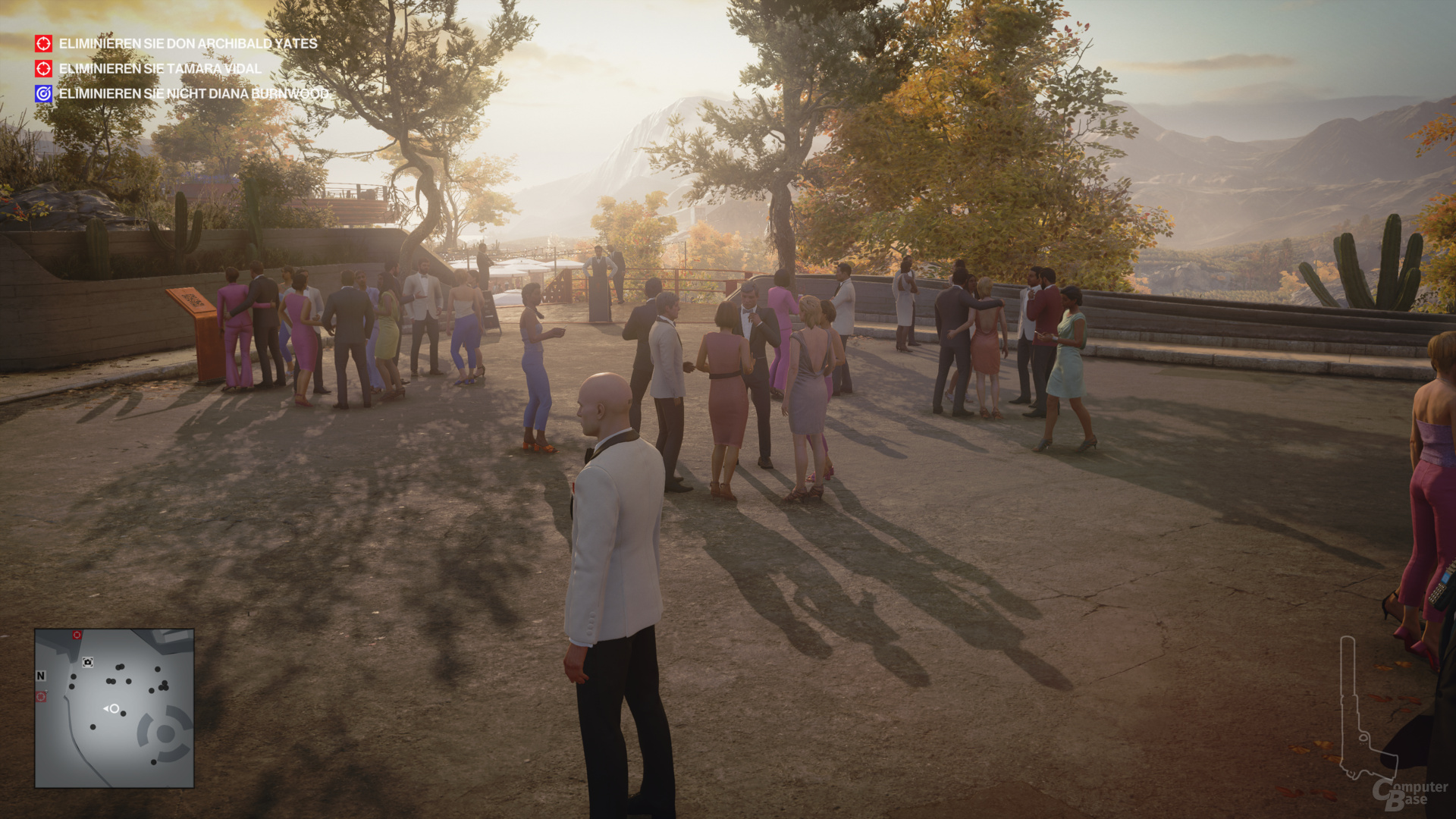 Raytracing shadows
Raytracing shadows 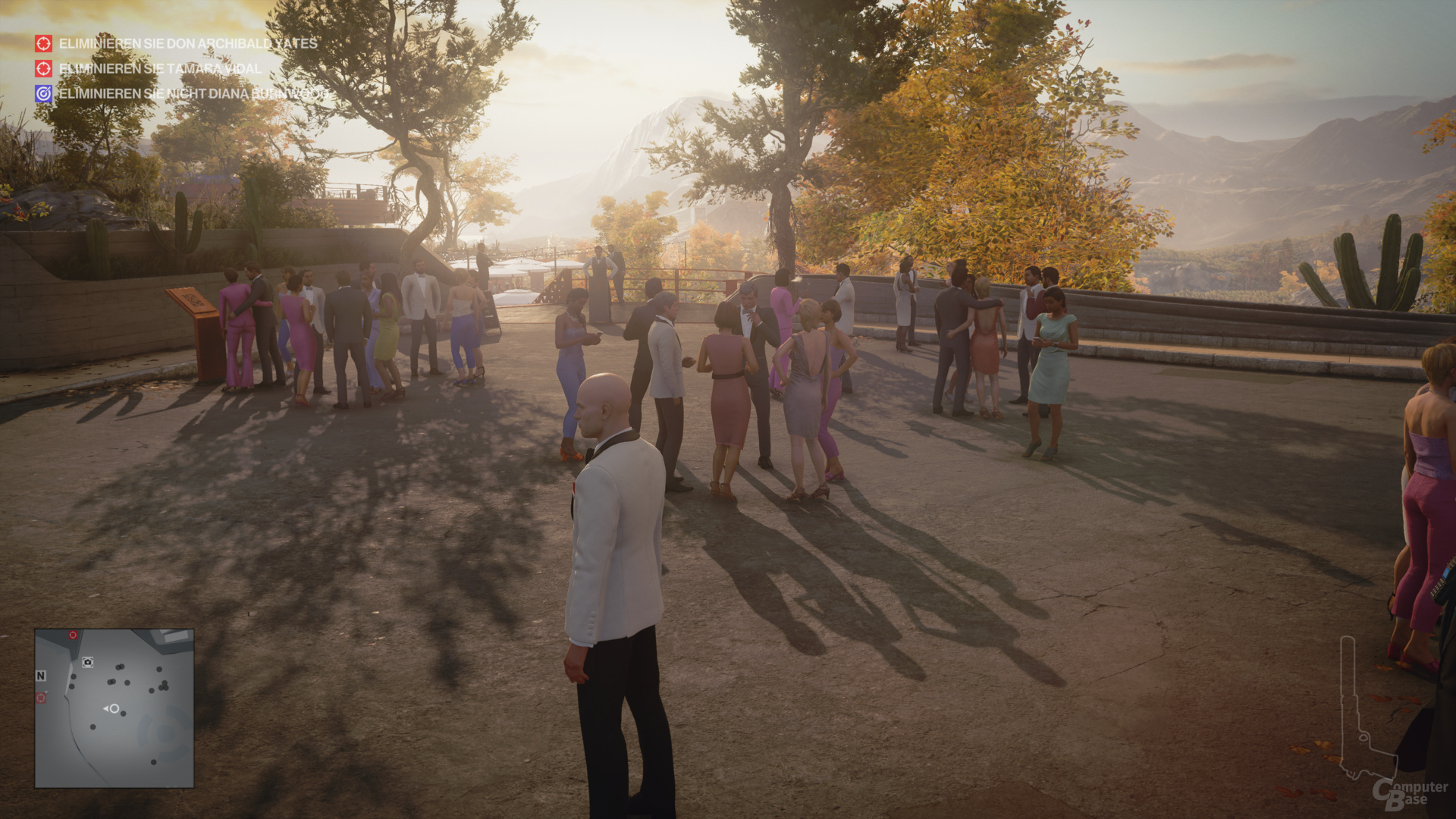 Raytracing reflections + shadows
Raytracing reflections + shadows 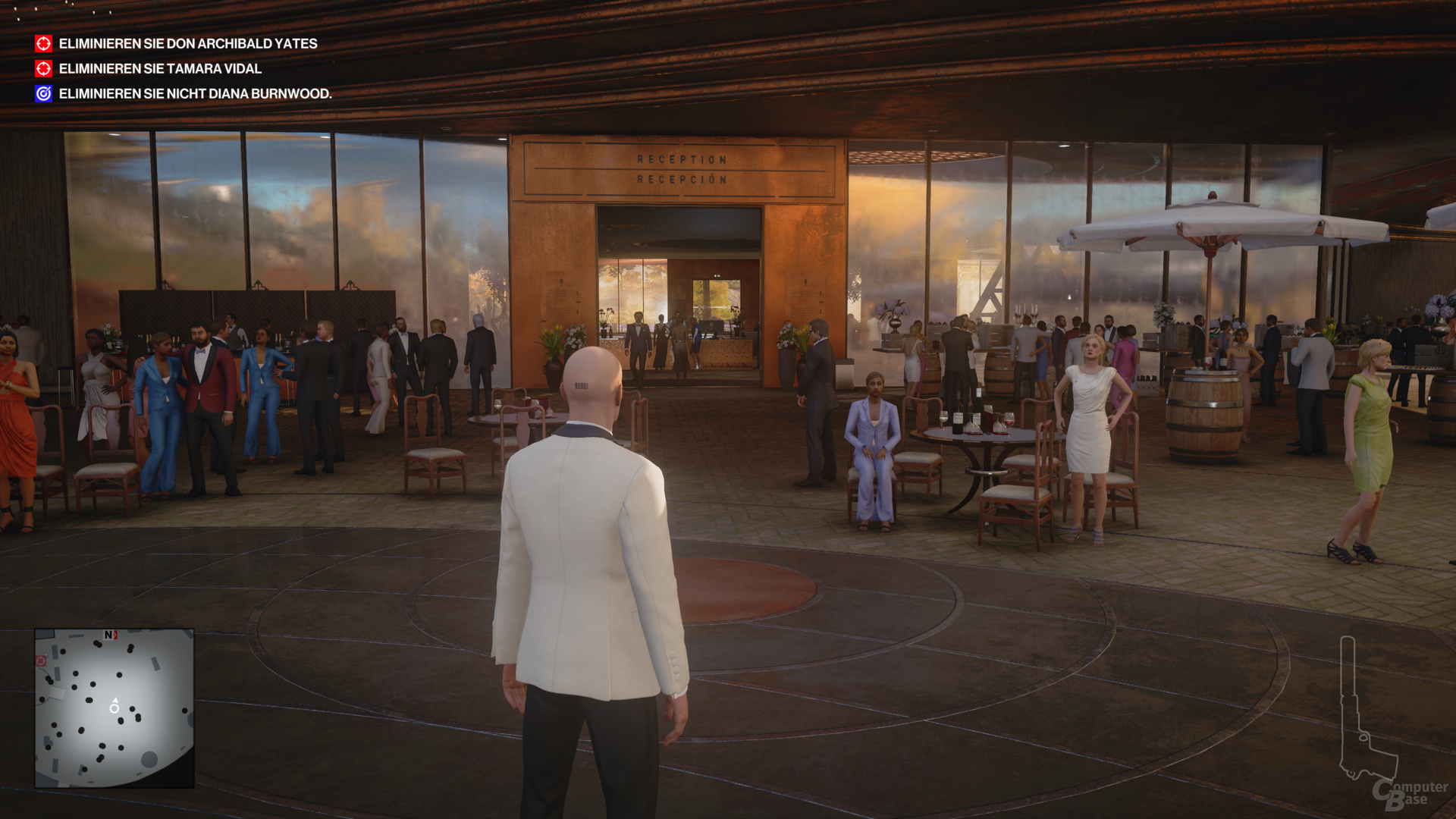 Raytracing Off
Raytracing Off 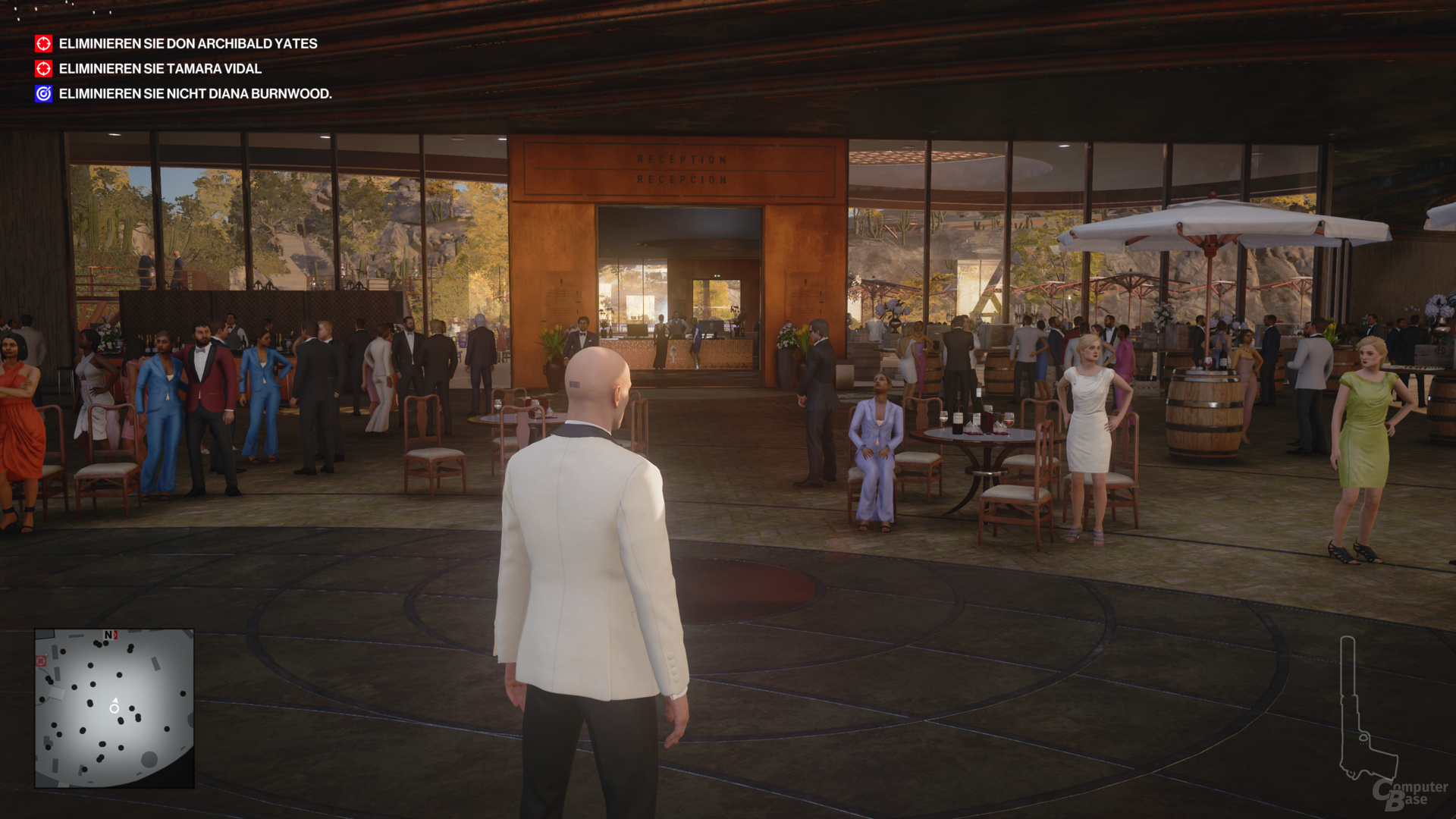 Raytracing Reflections
Raytracing Reflections 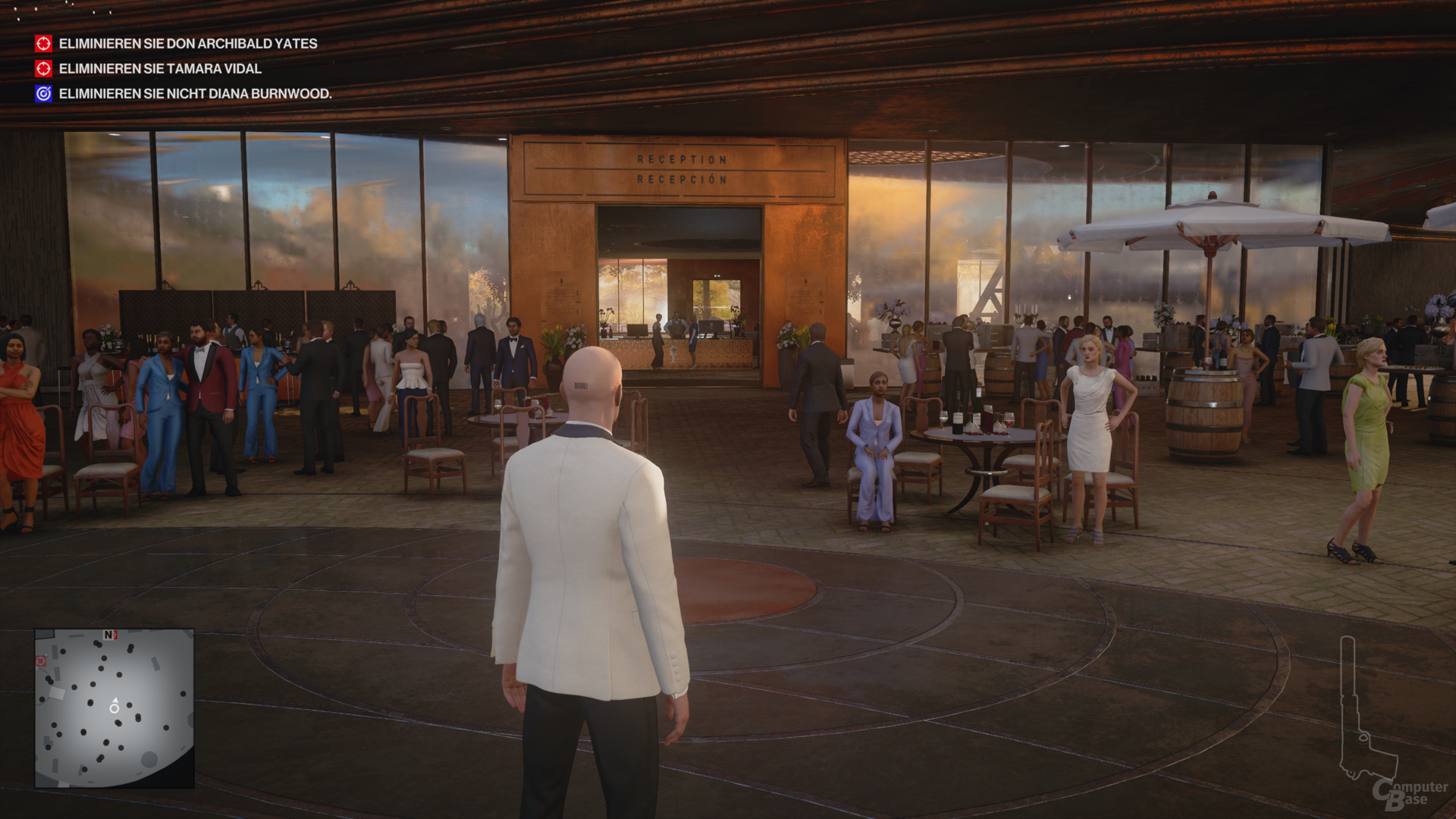 Raytraced shadows
Raytraced shadows  Raytraced Reflections + Shadows
Raytraced Reflections + Shadows 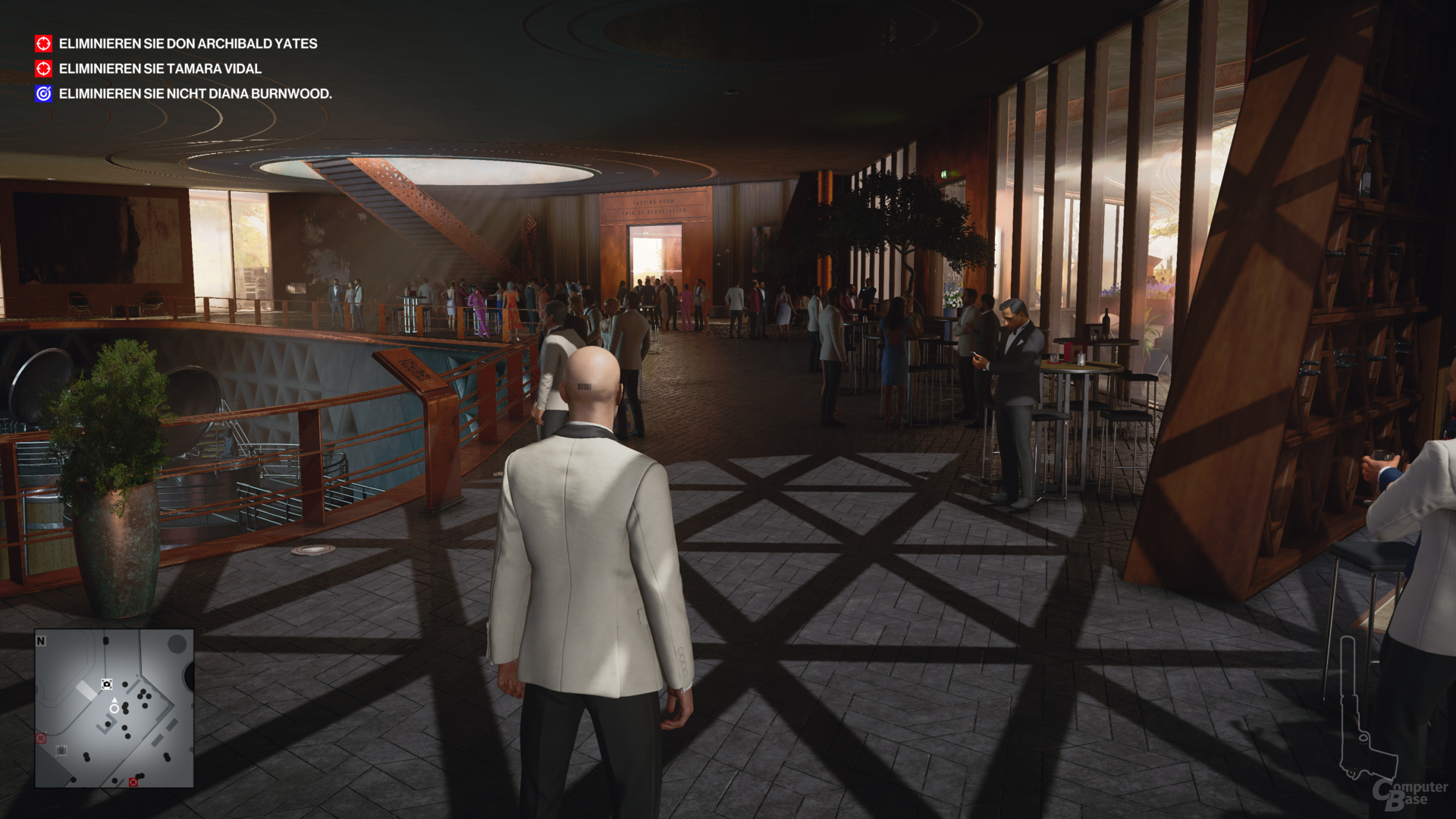 Raytracing Off
Raytracing Off 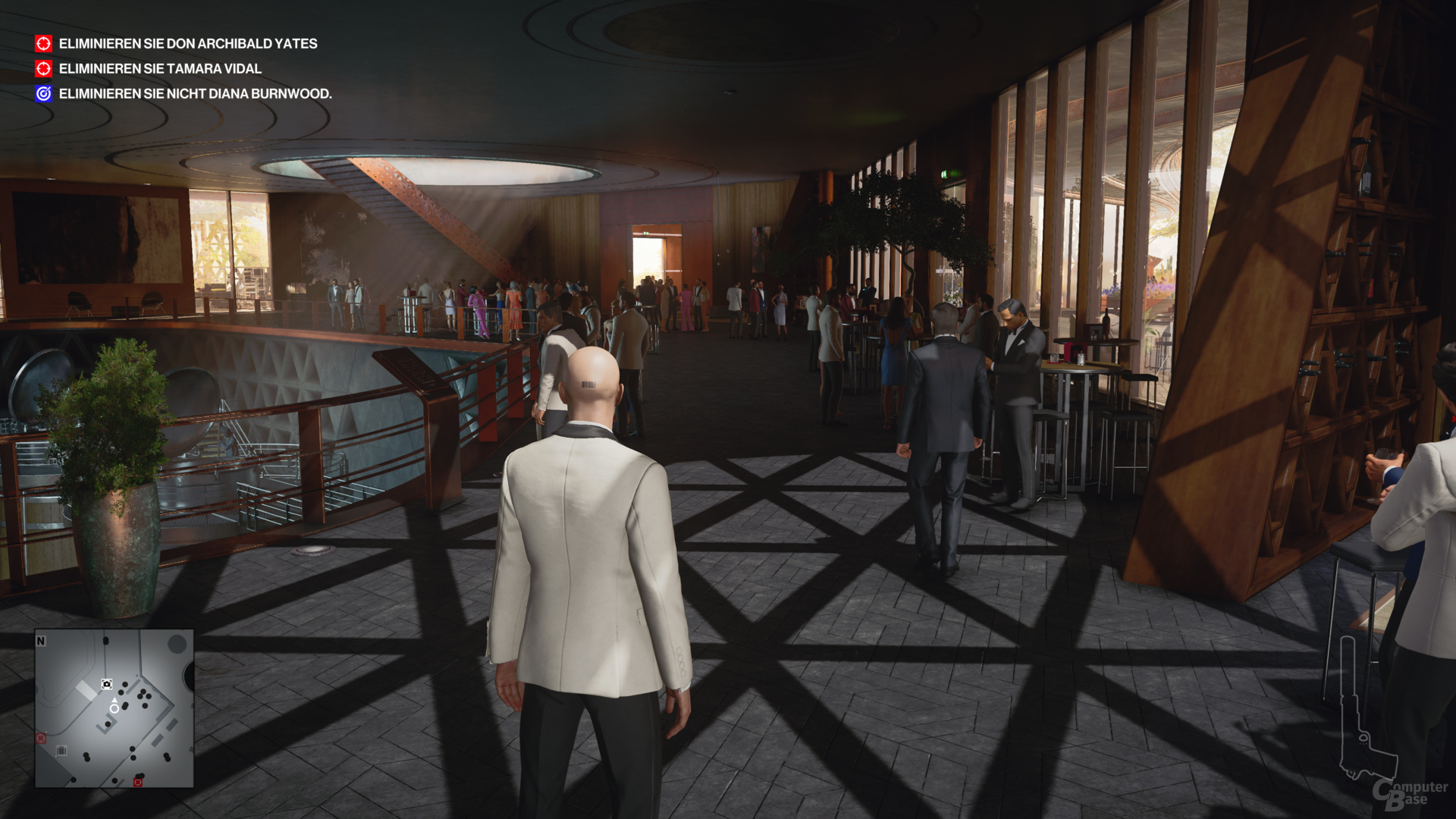 Raytracing Reflections
Raytracing Reflections 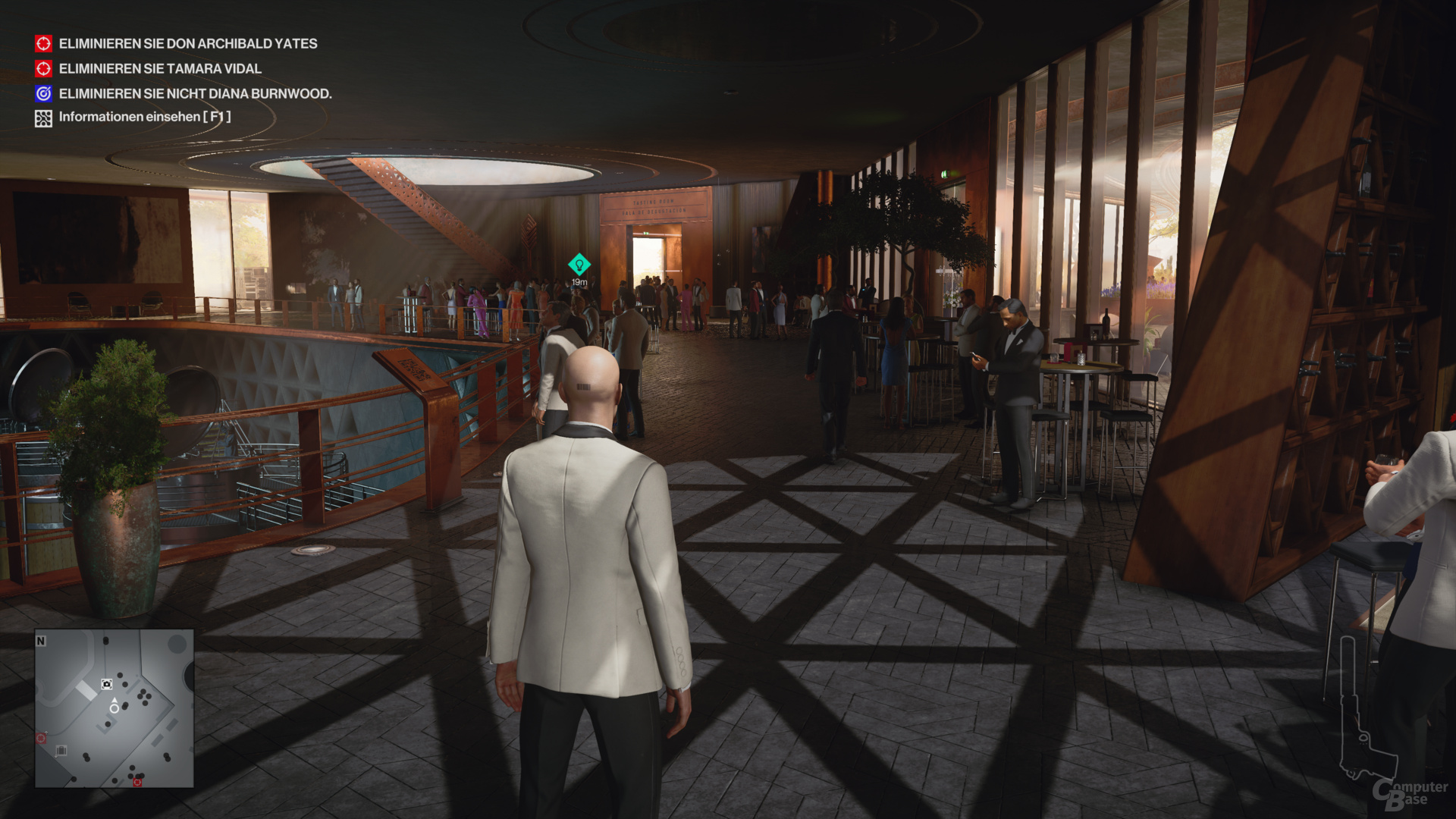 Raytraced shadows
Raytraced shadows 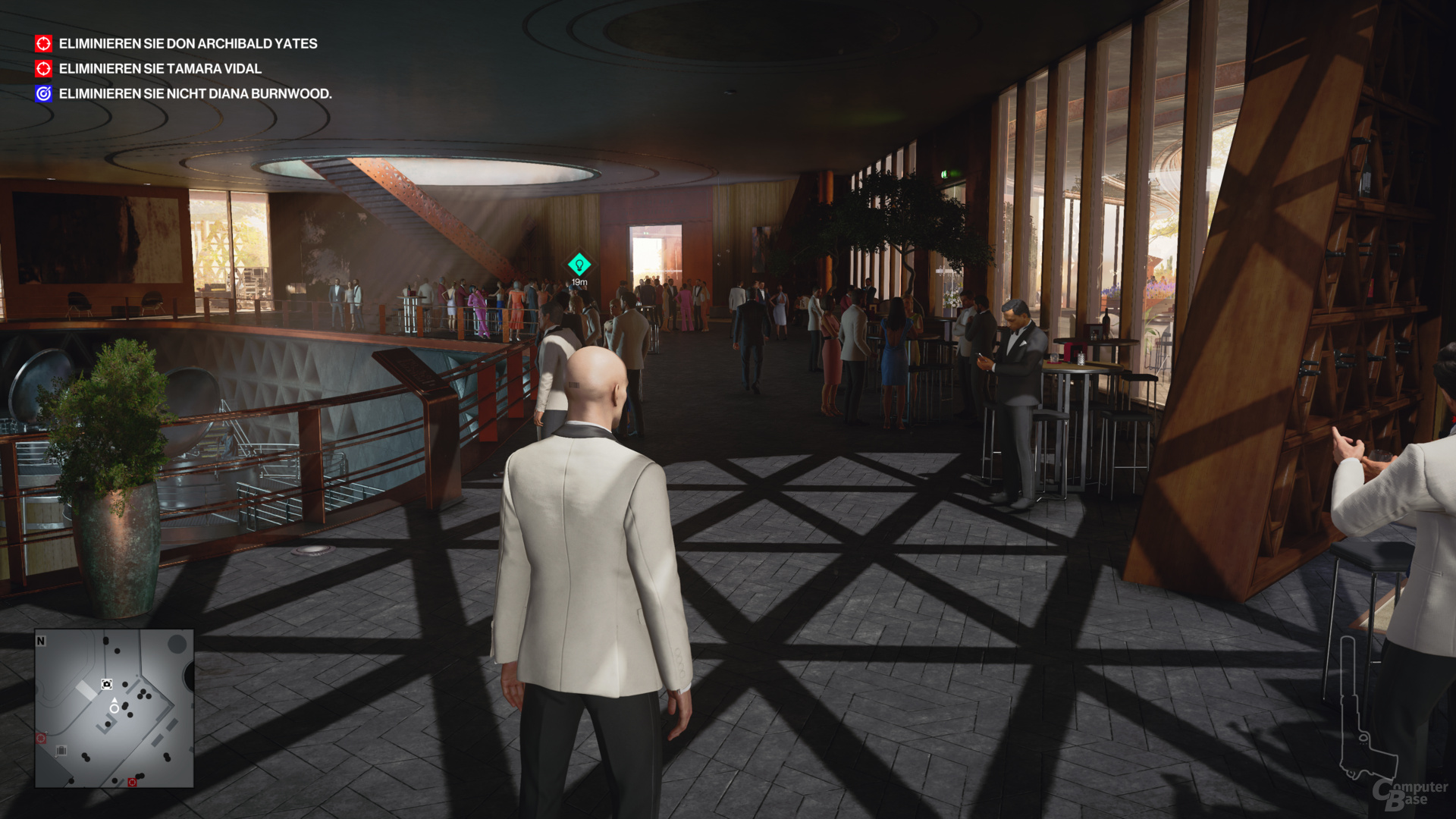 Raytraced Reflections + Shadows
Raytraced Reflections + Shadows  Raytracing Off
Raytracing Off 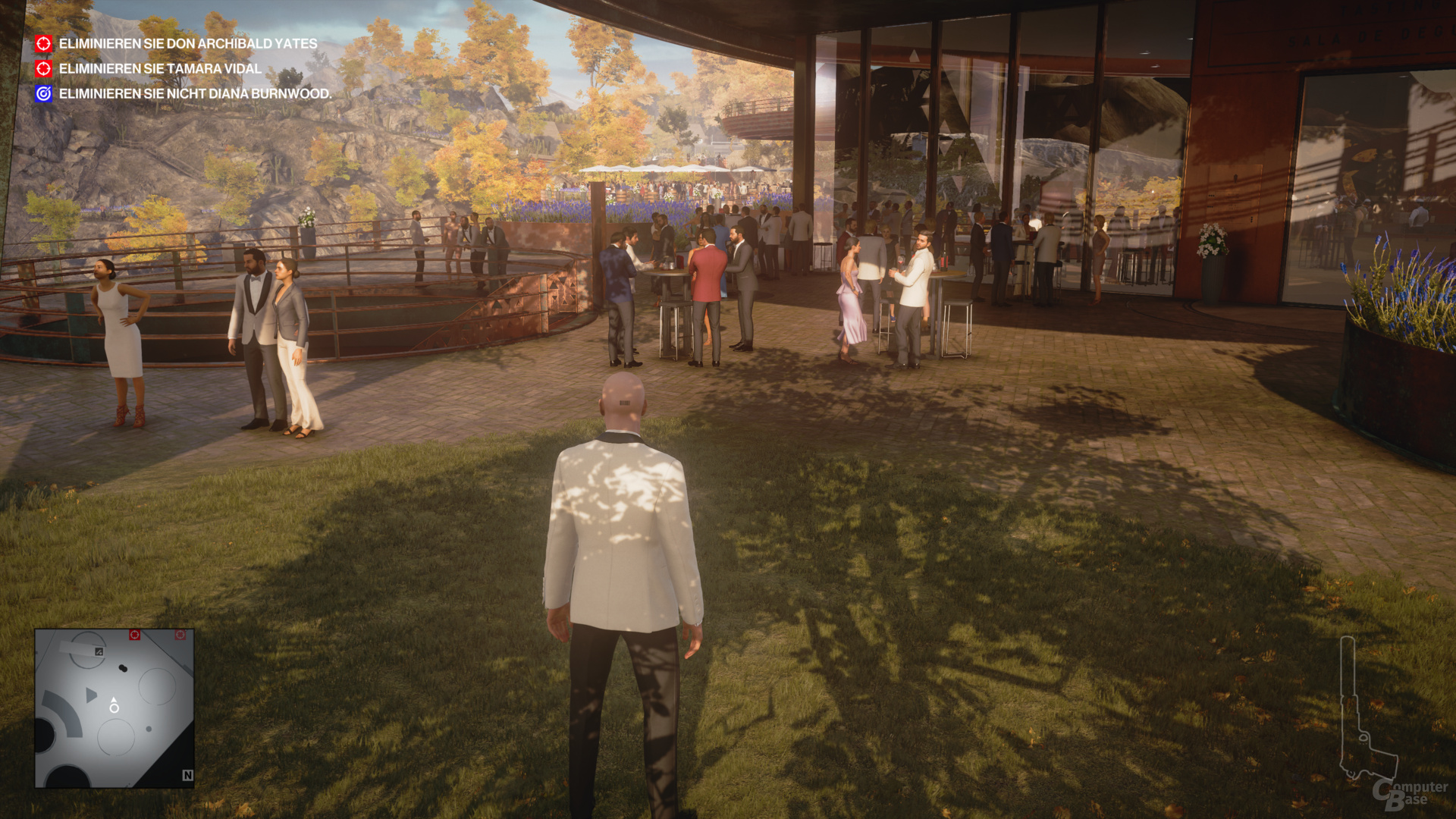 Raytraced reflections
Raytraced reflections 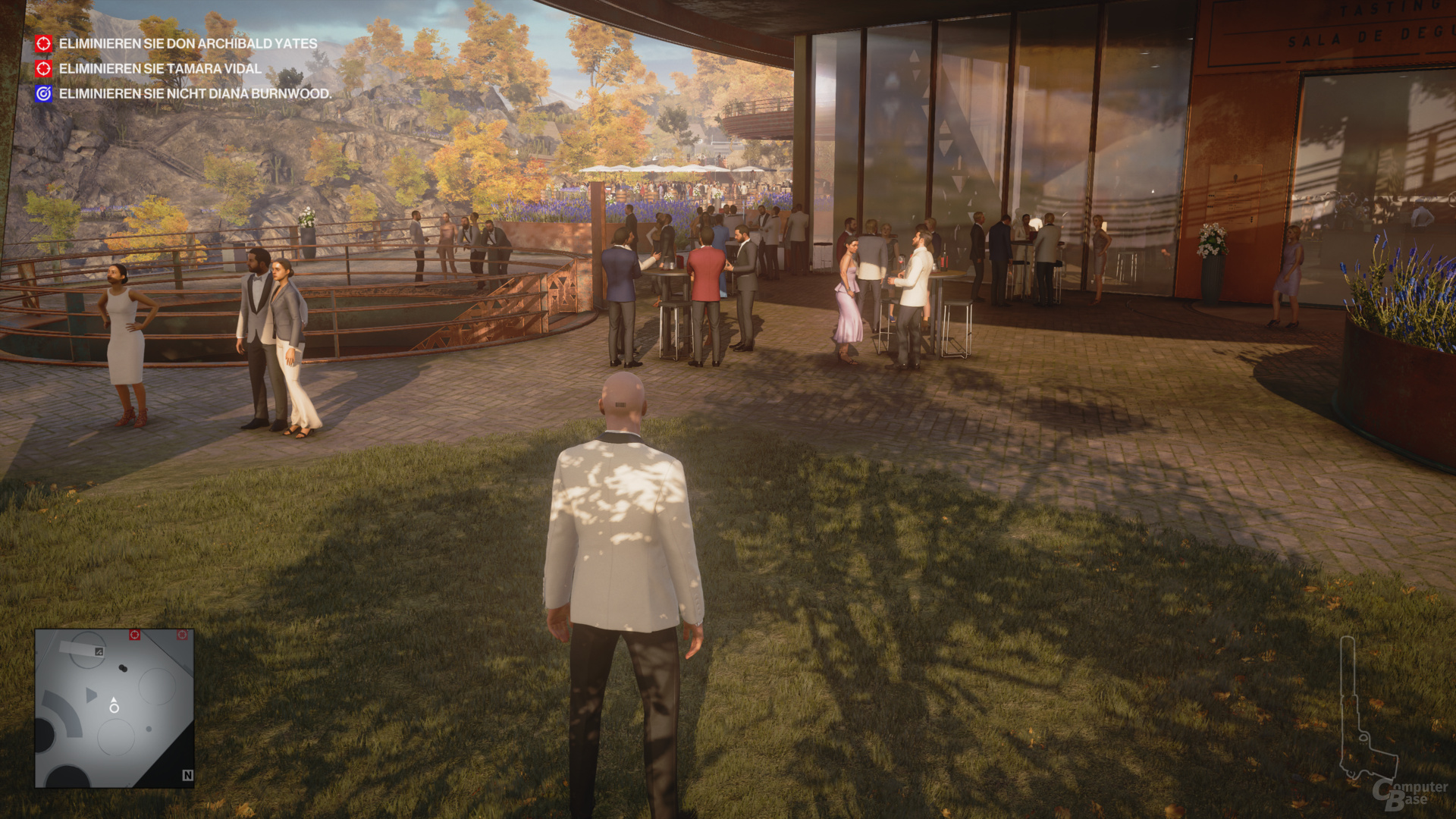 Raytraced shadows
Raytraced shadows 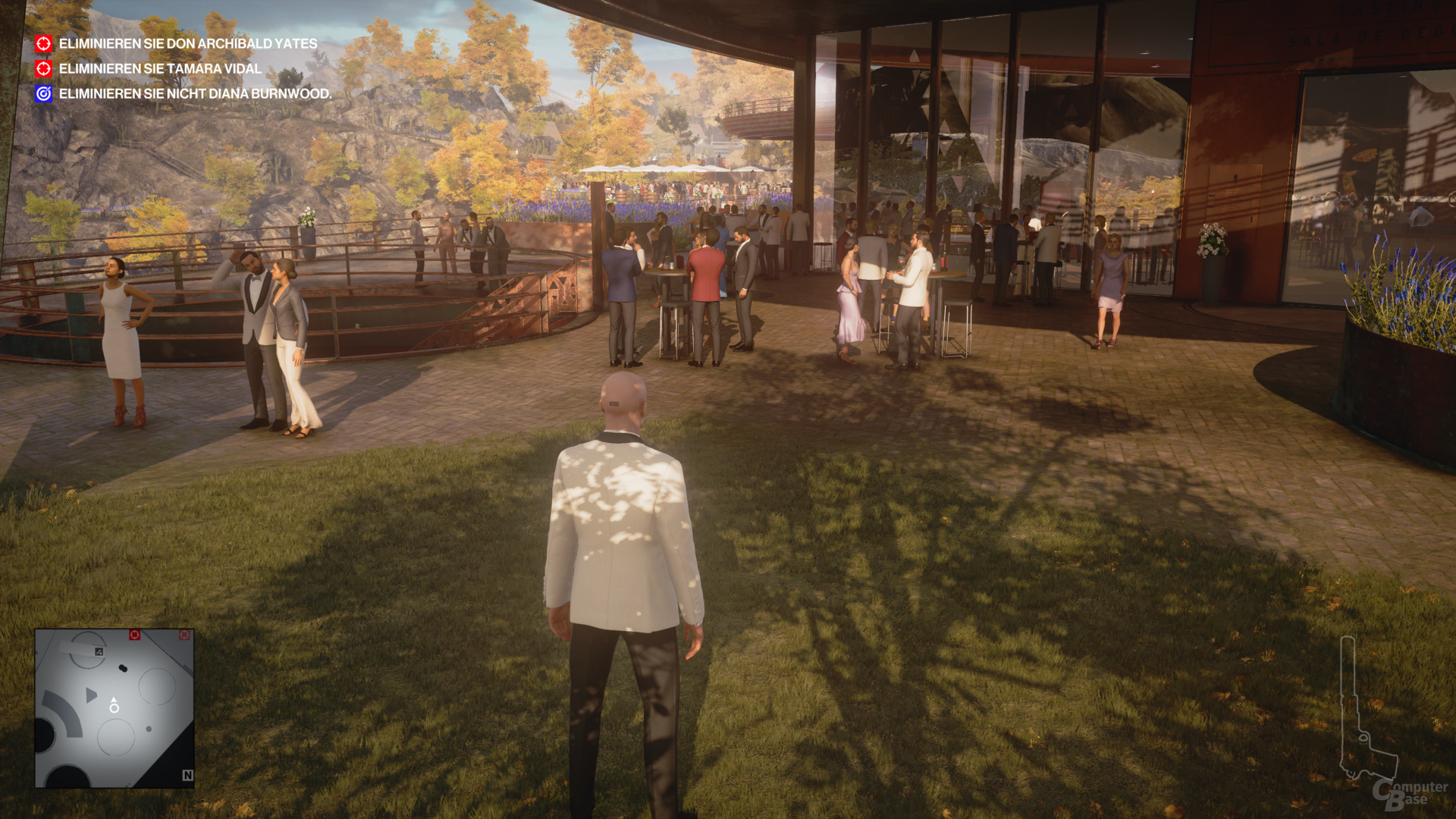 Raytracing reflections + shadows
Raytracing reflections + shadows Shadows and reflections at the same time are a bad idea
If you activate both raytracing effects, you have a problem in the Mendoza level. Because there the shadows always disappear completely for a few frames and then reappear. And that happens over and over again. The RT effects themselves, on the other hand, work perfectly, so the shadows or reflections in the level have to be switched off. Something like that just can't happen.
The image quality of AMD FSR 1.0 and Nvidia DLSS 2.3.2.0
There is little to say about FSR 1.0 in Hitman 3. Spatial upscaling behaves as you are used to. Accordingly, the possibility of use is low, since the image quality always drops. On still images, FSR still looks decent in connection with high resolutions due to the post-sharpening. But even there, with more aggressive modes or lower target resolutions than Ultra HD, it quickly becomes clear that the image quality visibly decreases.
This is even more true when moving, because unlike the much better FSR 2.0 (test in Deathloop) there is no temporal reconstruction. Accordingly, the entire image flickers visibly more. In addition, objects with fine details and thin lines that are already incorrectly displayed without FSR become even more problematic with FSR. Visually, Ultra HD with FSR on “Ultra Quality” is still usable even with a reduced image quality, but higher modes or lower target resolutions are then at the expense of the overall visual impression.
DLSS has good and bad sides
DLSS in Hitman 3, on the other hand, is a double-edged sword. The temporal stability is better with DLSS than with the native resolution, so the image flickers less than with the native resolution despite the lower number of render pixels. Even DLSS on “Performance” is superior. However, there are also some objects that DLSS does not really want to process. They then happily continue to flicker – nevertheless, the image steadiness is clearly better with DLSS.
-
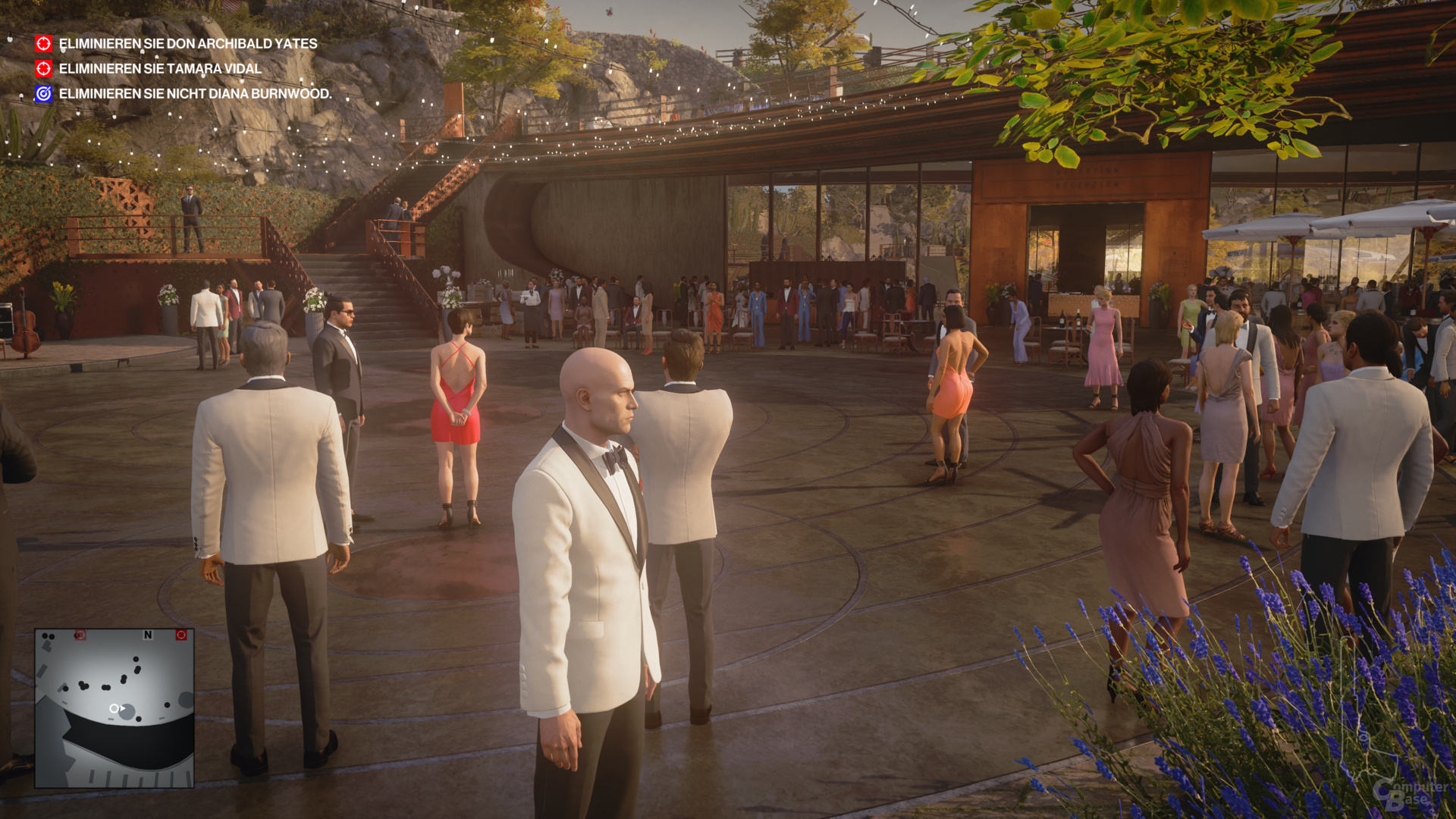 Ultra HD – Native Resolution Download
Ultra HD – Native Resolution Download
Image 1 of 10
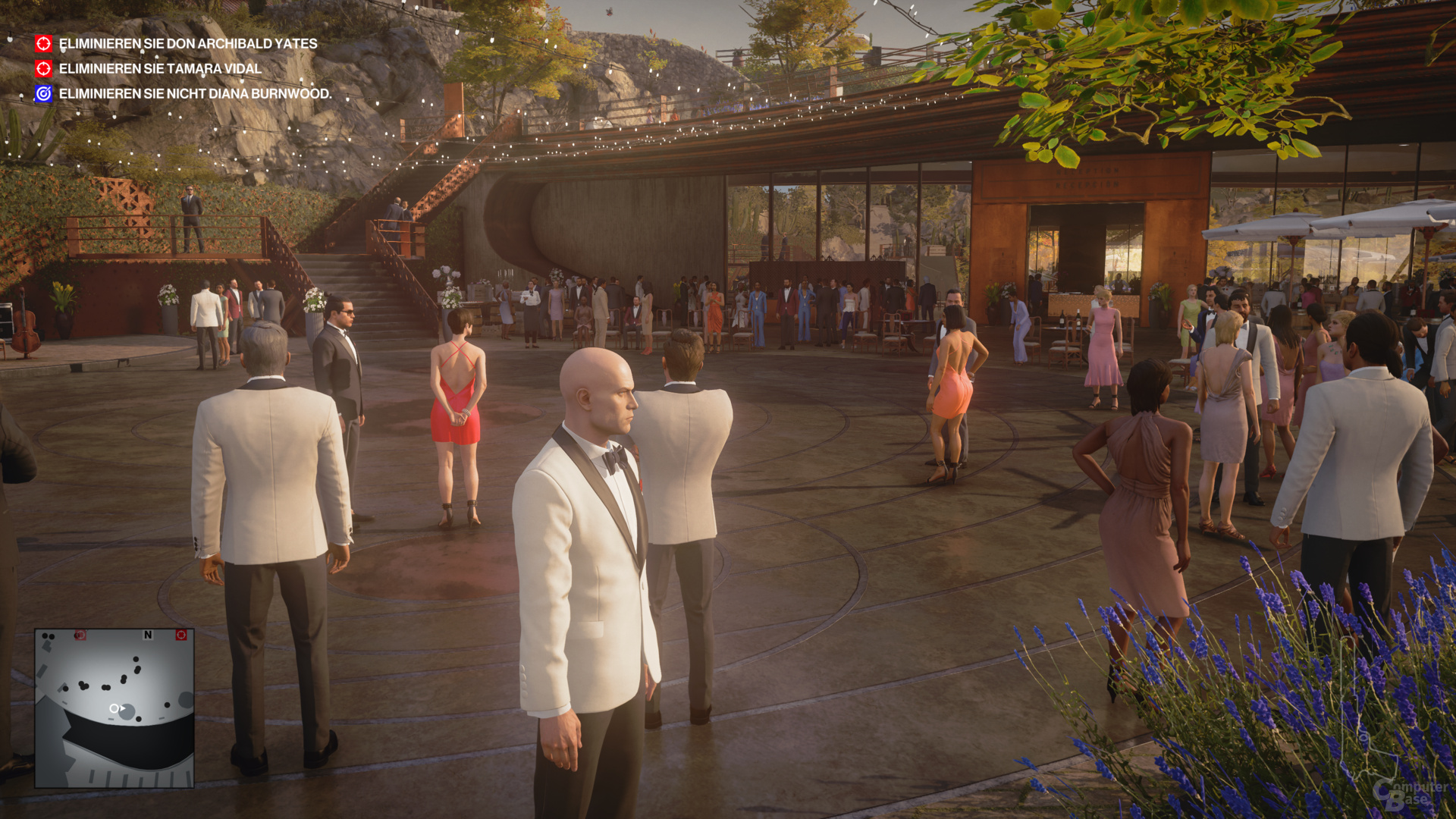 Ultra HD – Native Resolution
Ultra HD – Native Resolution  Ultra HD – DLSS Quality
Ultra HD – DLSS Quality  Ultra HD – DLSS Performance
Ultra HD – DLSS Performance 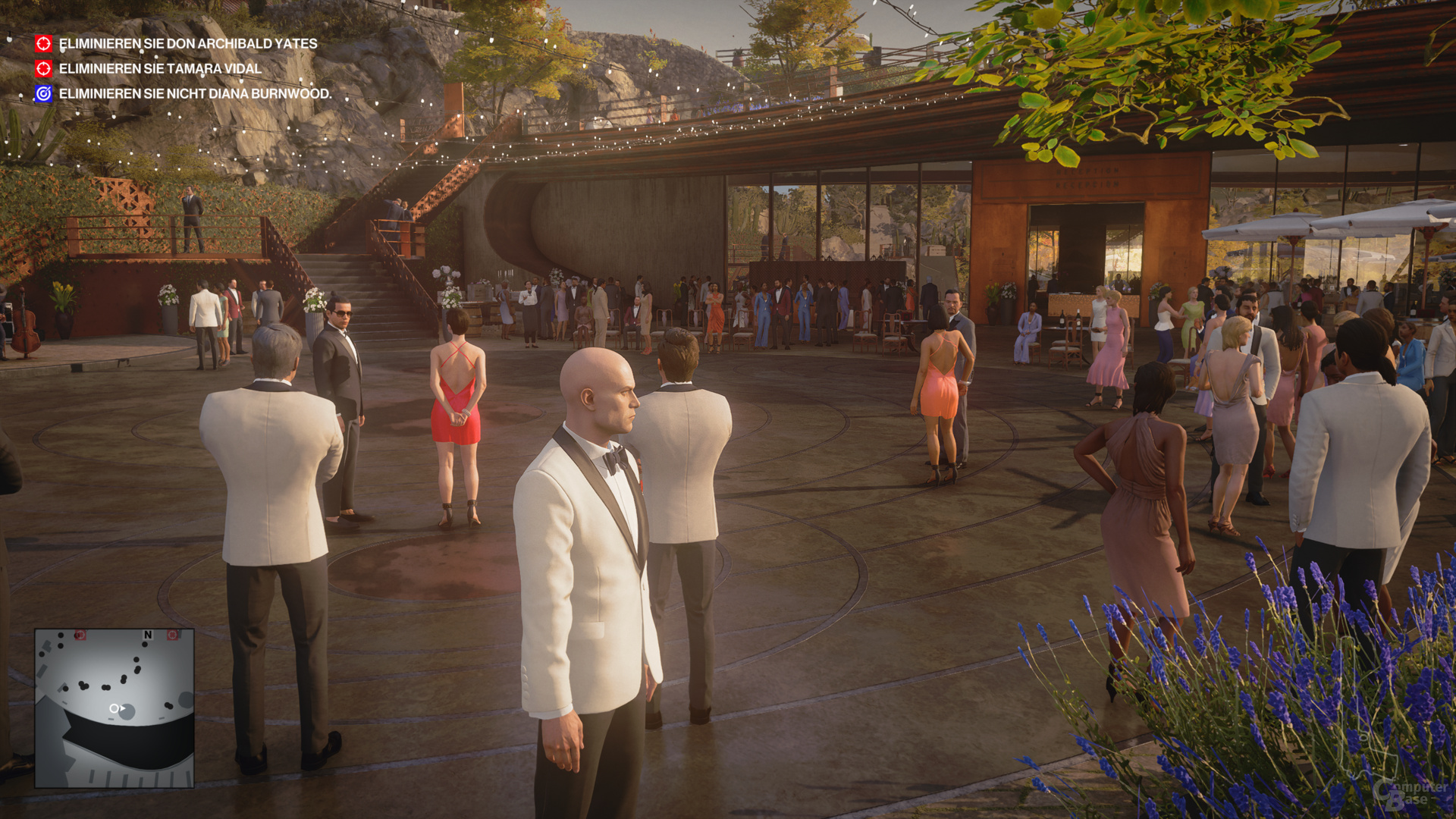 Ultra HD – FSR Quality
Ultra HD – FSR Quality  Ultra HD – FSR Performance
Ultra HD – FSR Performance  WQHD – Native resolution
WQHD – Native resolution  WQHD – DLSS Quality
WQHD – DLSS Quality 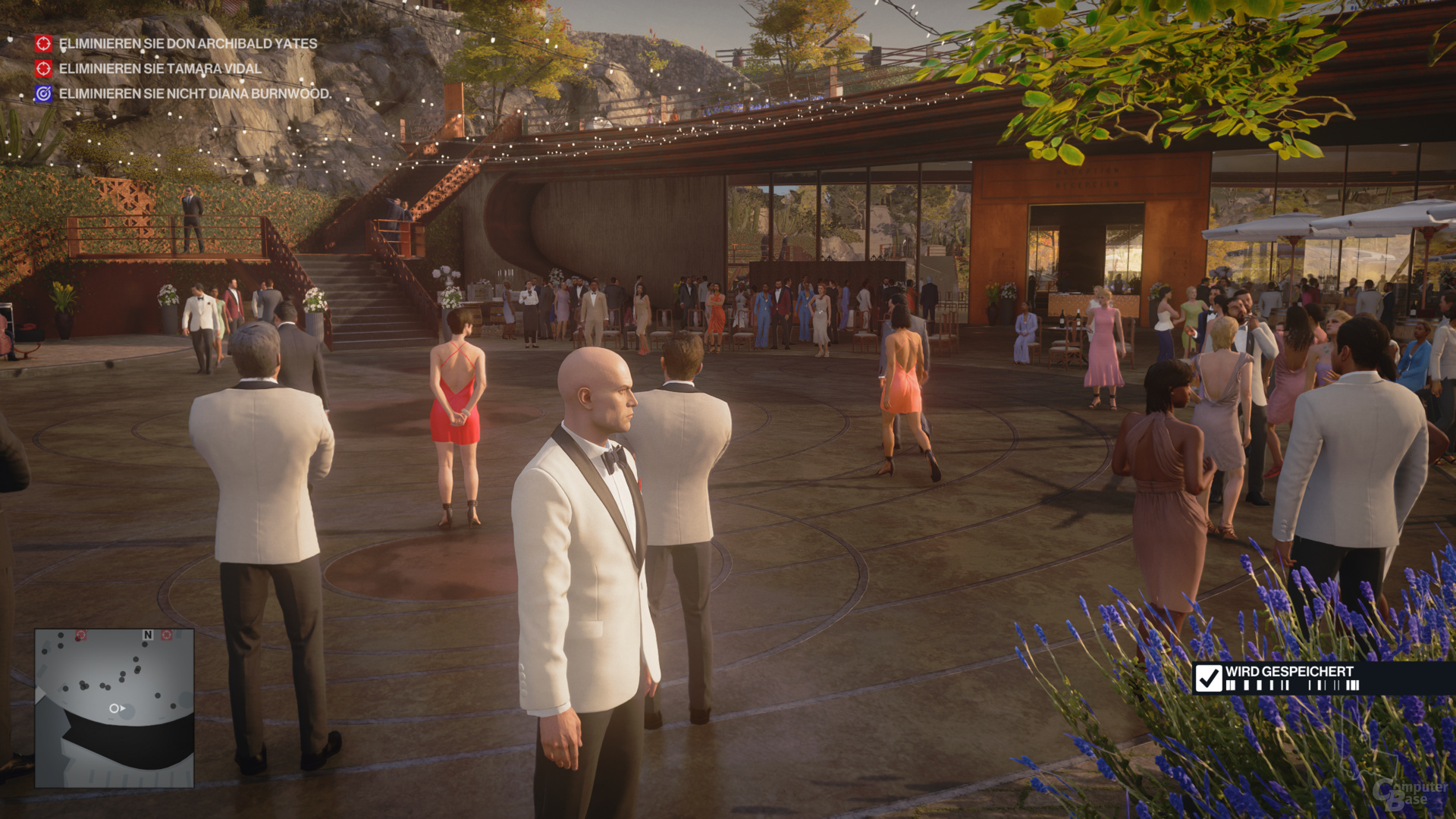 WQHD-DLSS Performance
WQHD-DLSS Performance  Quality
Quality 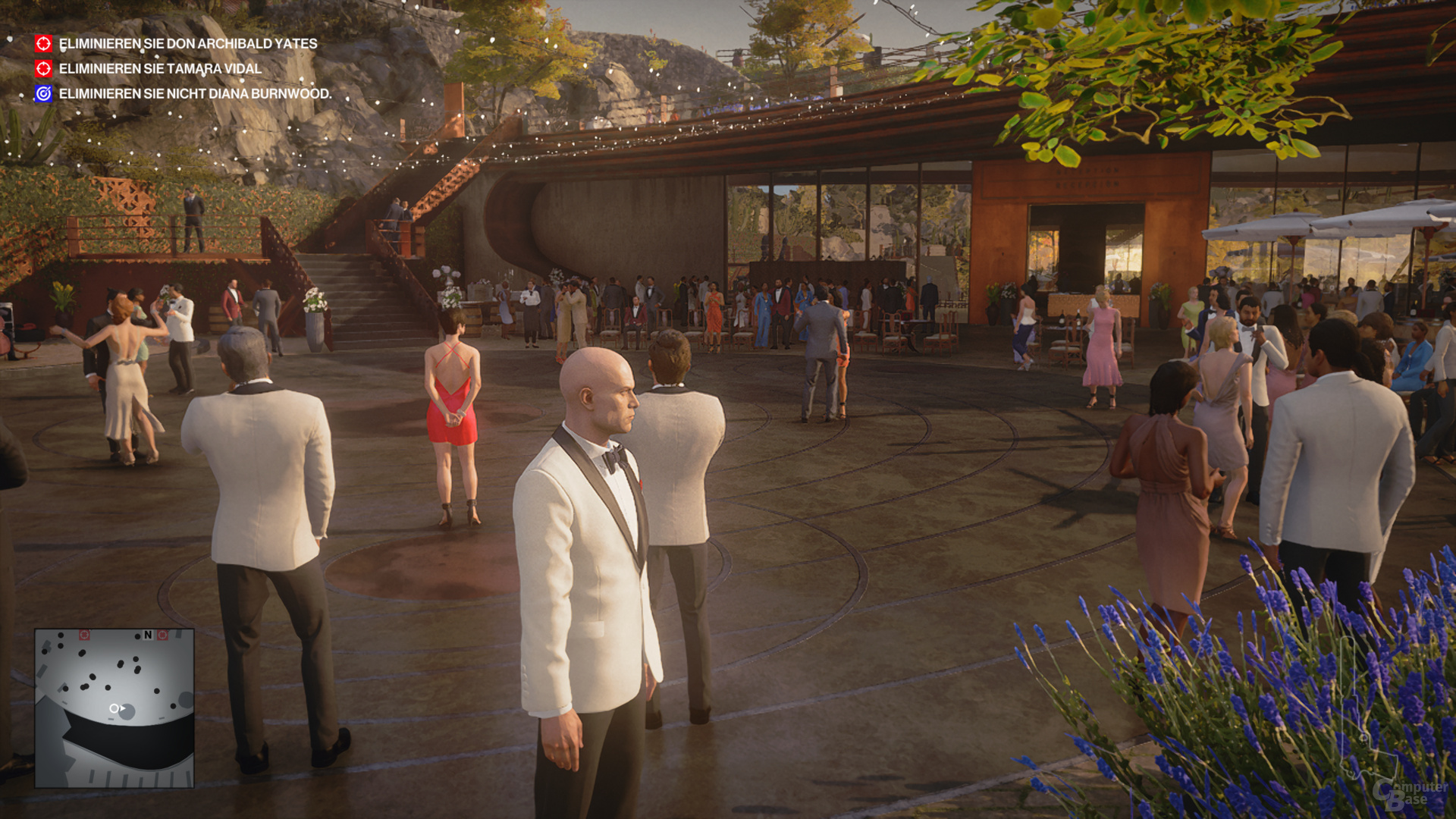 WQHD – FSR Performance
WQHD – FSR Performance DLSS is also superior in terms of image reconstruction. Some levels suddenly show fine details that are further traced with DLSS. In terms of image sharpness, there is not much to complain about. Although it decreases slightly compared to the native resolution, the effect is limited.
So far, so good. However, DLSS in Hitman 3 suffers no less from smearing and ghosting, both of which are represented quite intensively. With DLSS set to “Quality” in Ultra HD, the effect is limited and barely noticeable. However, more aggressive settings or lower resolutions quickly blur fine lines in motion, while other fine objects such as trees drag lines behind them. The two problem effects aren't new to DLSS, but they've been more manageable lately than they were in Hitman 3. That's why progressively more aggressive modes aren't the solution to performance problems in the game – at least not when smearing and ghosting bother. But even so, DLSS FSR 1.0 is optically clearly superior, especially with a few render pixels.
Page 1/2 Next page
Performance of raytracing, DLSS and FSR and conclusion

